Introduction

When Sony released the first affordable fullframe camera with the A7 in 2013 almost none of the enthusiast photographers were aware of issues related to filter stack differences. Filter stack describes what is in front of the sensor and different manufacturers decided to go for different thicknesses here that can influence how our lenses perform. If you stay within just one system this is usually not something to care about, but when adapting lenses it is very helpful to be aware of this topic.
In this article I try to tell you about these differences and for what lenses they matter, so you can find out if it is something that might affect you.
Contents
Filter stack trivia
Why is there even a filter stack? It can serve several different purposes. The first is, that it protects the delicate sensor. It usually also features a built-in IR/UV filter and for many cameras also a low-pass (anti-aliasing) filter.

When you are shooting analogue film there obviously is no such filter, so for these lenses to perform properly on a digital sensor that filter stack in front of it should be as thin as possible. For SLR lenses it doesn’t matter that much, as thanks to the mirrorbox the rear element of SLR lenses is far away from the sensor, which means the light cannot hit the sensor at angles acute enough to cause any problems.
With small rangefinder lenses (e.g. M-mount or Contax-G lenses) the situation is different. Rangefinder cameras do not have a mirror box and to realize lenses as small as possible their rear elements are often very close to the sensor. This is especially true for wide angle lenses.
There are even companies like Kolari that – for a substantial amount of money – will exchange the filter glass of your camera for a different/thinner one. This is a modification that many people were interested in to get the most out of their compact M-mount lenses on a Sony E or Nikon Z camera.
Cameras included in this comparison
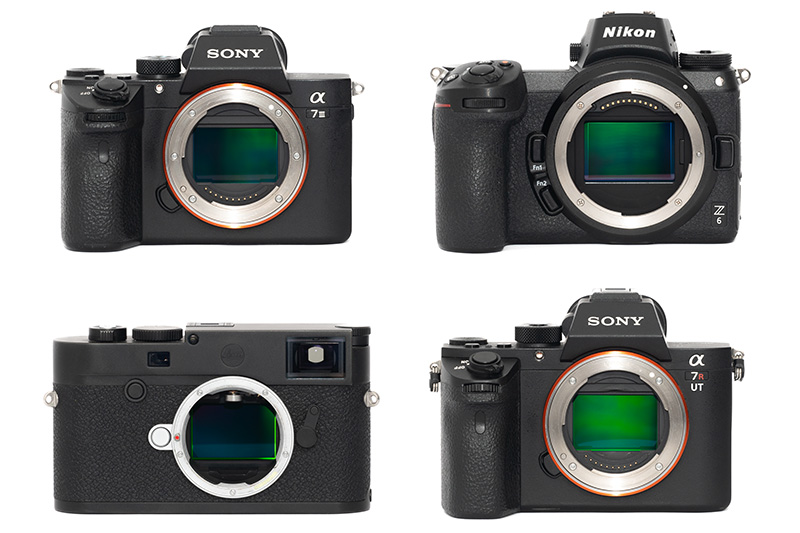
For this comparison I used the following four cameras:
- Sony A7III – 24mp, no AA filter
- Nikon Z6 – 24mp, AA filter
- Leica M10 – 24mp, no AA filter
- Sony A7rII UT – 42mp, no AA filter
The first three cameras all feature 24mp, which makes them easy to compare. Unfortunately the Nikon Z6 does feature a strong AA filter, so it does not reveal as many fine details as the others. All these cameras are unmodified as you would buy them from a store.
The Sony A7rII features a Kolari UT modification where the original filter stack has been replaced with a much thinner one. For the following sharpness comparisons I had to scale down the pictures taken with this camera, which puts it at a slight advantage, but that doesn’t matter to draw a general conclusion here.
There are some lists online to be found disclosing the filter stack thickness of different cameras. We need to keep in mind here that they could still be made of different glass types with different refraction indices, leading to different results, despite having the same thickness on paper.
M-mount lenses

M-mount lenses are where this is most interesting as especially the old ones are designed for film where there is no filter stack and because they often have rear elements close to the sensor. It means, these lenses will show the biggest degradation in image quality when used on a camera with a thick filter stack.
I used the following lenses for this comparison:
- Voigtländer VM 15mm 4.5 Super-Wide-Heliar II
- Voigtländer VM 21mm 1.4 Nokton (FLE)
- Voigtländer VM 35mm 1.2 Nokton III
- Voigtländer VM 50mm 1.0 Nokton (FLE)
- Voigtländer VM 75mm 1.5 Nokton
Why did I choose these lenses? First we will see that wide angle lenses are more affected than tele lenses. These are also all high performance lenses that perform very well on the filter stack they have been designed for from their maximum aperture, which means they should be able to reveal those differences.
Color Cast
The Voigtländer VM 15mm 4.5 SWH II is an ultra wide angle lens with the rear element close to the sensor originally designed for film. Its design leads to acute light rays hitting the sensor and those are the light rays most affected by a change in filter stack. Cosina is aware of this, hence they released the (much bigger) Voigtländer VM 15mm 4.5 SWH III optimized for digital sensors. With longer lenses this is less of an issue, so we only have a look at this 15mm lens here.
To regular readers these results won’t be much of a surprise: the Leica M10 shows the infamous “italian flag” vignetting with an asymmetrical green color cast on the left and magenta one on the right. This is apparently caused by the way the micro lenses are applied on the sensor. The older digital M cameras (M9, 240, 262) perform even worse in this regard, as does the M10r. The M11 on the other hand performs similar to the other cameras depicted here, as it also makes use of a (probably Sony) BSI sensor.
On the other cameras this lens only creates a slight green color cast in the corners and it looks to me like on the Sony A7rII UT we see the least of it.
If you want to learn how to fix color cast in Lightroom have a look at this article.
Sharpness Infinity
Voigtländer VM 15mm 4.5 SWH II
The Voigtländer VM 15mm 4.5 SWH II actually looks best on the Sony A7rII UT, because it doesn’t have the color cast issues of the Leica M10. Surprisingly here the Z6 follows not far behind, it looks only slightly worse. The Sony A7III looks worst here, already the midframe is affected at f/4.5 and even by f/8.0 the corners don’t look great.
Voigtländer VM 21mm 1.4 Nokton
The Voigtländer VM 21mm 1.4 Nokton is a very complex modern design and on the Leica M10 it shows an amazing performance from f/1.4. It looks slightly worse on the Sony A7rII UT with the Nikon Z6 following closely behind. On the Sony A7III with its stock sensor it is a complete loss at f/1.4 by comparison: already the midframe looks just awful. Stopped down to f/8.0 it still doesn’t look as good on the A7III as it does on the other cameras.
Voigtländer VM 35mm 1.2 Nokton III
The Voigtländer VM 35mm 1.2 Nokton III looks very similar on Leica M10 and Sony A7rII UT at f/1.2. On the Nikon Z6 it is mainly the midframe that looks a bit worse. On the Sony A7III the corners look noticeably worse and also the midframe takes a slight hit. At f/8.0 this lens looks great on all cameras.
Voigtländer VM 50mm 1.0 Nokton
The Voigtländer VM 50mm 1.0 Nokton is another complex floating elements design with the rear element close to the sensor. On the M10 it shows a surprisingly good across frame performance from f/1.0. The order is unsurprisingly similar: it still looks good on the Sony A7rII UT, a little worse on the Nikon Z6 and noticeably worse on the Sony A7III.
Voigtländer VM 75mm 1.5 Nokton
The Voigtländer VM 75mm 1.5 Nokton is the longest M-mount lens I was using here. I expected it to perform very similar on all the four cameras and this is indeed the case.
Observations
As was to be expected we see the biggest differences with the wider lenses and at wider apertures and a lot less with the lenses stopped down, as the widened depth of field can cover the field curvature caused by the thicker filter stack to some degree.
We also see that there is a big difference between the performance on a stock Sony A7III and a stock Nikon Z6 – with the latter being a much better choice for adapting M-mount lenses. While the lenses don’t perform just as good as on a Leica M10 or a camera with Kolari UT modification, it is usually only the exterme corners that show a slight degradation in image quality.
But let’s have a look at the next section, before jumping to any conclusions just yet.
Bokeh
Voigtländer VM 21mm 1.4 Nokton
If you ever wondered why I am hesitant using fast M-mount wide angle lenses on stock Sony cameras, you can clearly see here why that is the case.
With the focus on the tree in the center, the top right corner is clearly out of focus when looking at the Leica M10’s and Sony A7rII’s crops. On the Sony A7III it is completely in-focus though, because the field curvature bends the focal plane so much, that the corners (and also borders) are also in focus – even though they shouldn’t be.
In the Nikon Z6 crop we see that the corners are not as much blurred as with M10 and A7rII UT, but things look still better compared to the Sony A7III.
Voigtländer VM 35mm 1.2 Nokton III
Compared to the 21mm discussed before, the situation is not as bad with this Voigtländer VM 35mm 1.2 Nokton III – even though the trend generally continues. The corners are blurrier on the Leica M10 and Sony A7rII UT, only slightly less blurry on the Nikon Z6 and noticeably busier on the Sony A7III.
Voigtländer VM 50mm 1.0 Nokton
Same differences as we have seen with the VM 35mm 1.2 Nokton III.
Voigtländer VM 75mm 1.5 Nokton
With its 75mm focal length this Voigtländer VM 75mm 1.5 Nokton is not affected as much by the different filter stacks as the aforementioned lenses. Bokeh in the corners still looks a tiny bit worse on the Sony A7III, but not enough to really worry about. Without a direct comparison this difference will also be hardly noticeable.
Observations
As we have seen in this section, the differences in filter stack thickness can have a huge and easily visible impact on the out of focus rendering of fast wide angle lenses at longer focus distances.
At shorter distances this is usually not a problem, as the depth of field is so thin that the unfavourable field curvature becomes mostly irrelevant.
I use fast lenses in the 21-35mm range at longer focus distances a lot for creating environmental portraits though, so I avoid using such wide M-mount lenses on stock Sony fullframe cameras.
E-mount lenses
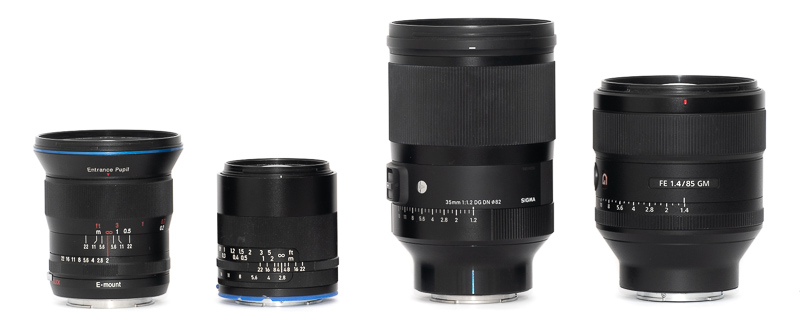
Thanks to the Megadap and Techart adapters Sony E-mount lenses can be used with only little limitations on Nikon Z-mount cameras. The lineup of lenses for Z-mount is still very limited – especially when it comes to 3rd party offerings – and even if a lens is available as both, E and Z-mount, the E-mount version is often more affordable, so I was wondering, if their optical performance suffers when used on a Z-mount camera.
I used the following lenses for this comparison:
Why did I choose these lenses? Again we will see how different focal lengths are affected. Furthermore the Laowa 15mm 2.0 has a rear element close to the sensor and the Sigma 35mm 1.2 Art DG DN is one of the highest performing lenses I have used so far, so again these should be able reveal any kind of differences.
Sharpness infinity
Laowa 15mm 2.0 Zero-D FE
The Laowa 15mm 2.0 Zero-D FE is not only an ultra wide lens but also one with a comparably small rear element close to the sensor, meaning the light rays will hit the sensor at acute angles, so I did expect some differences here and indeed that is the case.
At f/2.0 the corners look way worse compared to using the lens on a stock E-mount camera and already the midframe area looks slightly worse. Stopped down to f/8.0 the corners still look a bit worse on the Z6, but this might also be due to its strong AA filter.
Zeiss Loxia 21mm 2.8
Also the Zeiss Loxia 21mm 2.8 has a small rear element comparably close to the sensor and again we see slightly worse corner performance on the Z6 at f/2.8.
Sigma 35mm 1.2 Art DG DN
The Sigma 35mm 1.2 Art DG DN is an extremely high resolving lens and in the center of the frame it shows what a big difference the Z6’s strong AA filter makes.
I still see a slight difference in corner performance at wider apertures, but I can hardly call it field relevant.
Sony FE 85mm 1.4 GM
With this longer 85mm lens I don’t see any meaningful differences.
Observations
The filter stack differences definitely affect the corner performance of the wider E-mount lenses. From these four lenses I tried, it looks to me that around 35mm this starts to be negligible.
If you want to adapt some of the high performance ultra wide E-mount lenses (e.g. Sony FE 14mm 1.8 GM, Sony FE 20mm 1.8 G, Sony FE 12-24mm 2.8 GM) they will not show as good across frame performance at wider apertures as on an E-mount camera though.
Bokeh
Sigma 35mm 1.2 Art DG DN
In this direct comparison the bokeh might look a tiny bit smoother on the Sony A7III, but I don’t see this as a meaningful difference.
Sony FE 85mm 1.4 GM
I do not see any relevant difference here.
Observations
It looks like the filter stack thicknesses of the Sony A7III and the Nikon Z6 are similar enough not to cause any harm to the bokeh. However, the situation might be worse with wider lenses like e.g. the Sony FE 24mm 1.4 GM. For anything 35mm and up I do not think this is something to worry about though, so I wouldn’t mind using my Sigma 35mm 1.2 Art DG DN or my Sony FE 85mm 1.4 GM on a Nikon Z-mount camera.
Conclusion
When the first Sony fullframe E-mount cameras hit the market, one groundbreaking feature was, that you could adapt all kind of legacy lenses to them. It was also the first time, the compact fullframe M-mount lenses could be used on a significantly more affordable camera. At that time most people weren’t aware of filter stack differences.
With today’s high performance lenses with short register distance it actually makes a notable difference for what filter stack they have originally been designed for though – at least when it comes to wide angle lenses. The compact M-mount lenses work best on a Leica M10 or a Kolari UT modded camera. In terms of color cast the Kolari modded cameras actually perform better than all the Leica M cameras that came before the M11.
When it comes to Nikon’s Z-mount cameras there were a lot of rumors regarding their filter stack thickness and how well they work with M-mount wide angle lenses. I don’t like rumors, I like facts, so I decided to check for myself. And what we found out here is, that they may not work as well with these M-mount wide angle lenses as a Leica M or Kolari modded camera, but in many cases they come very close. And they play much better with these lenses than stock Sony E-mount cameras.
When using native E-mount wide angle lenses on a Kolari UT modded camera they show a similar degradation in image quality in the corners as M-mount wide angle lenses do when used on a stock Sony camera – physics work in both ways. You can already find some comparisons showing this here.
If you are looking for a camera to adapt legacy lenses to in 2024, you should definitely have a closer look at Nikon’s Z-mount cameras. But not only legacy lenses, also Sony’s E-mount lenses can be adapted to those Z-mount cameras with surprisingly well working AF, making them the most versatile fullframe cameras you can find today.
Support Us
Creating comparisons like this takes a lot of time, so if if you found this article useful or just liked reading it – why not treat us to a coffee?
![]()
![]()
![]() via Paypal
via Paypal
Further Reading
Latest posts by BastianK (see all)
- Review: Sony FE 70-200mm 4.0 G Macro OSS II - December 20, 2025
- Review: Viltrox AF 35mm 1.2 FE LAB - December 17, 2025
- Analogue Adventures – Part 47: Tübingen - December 17, 2025
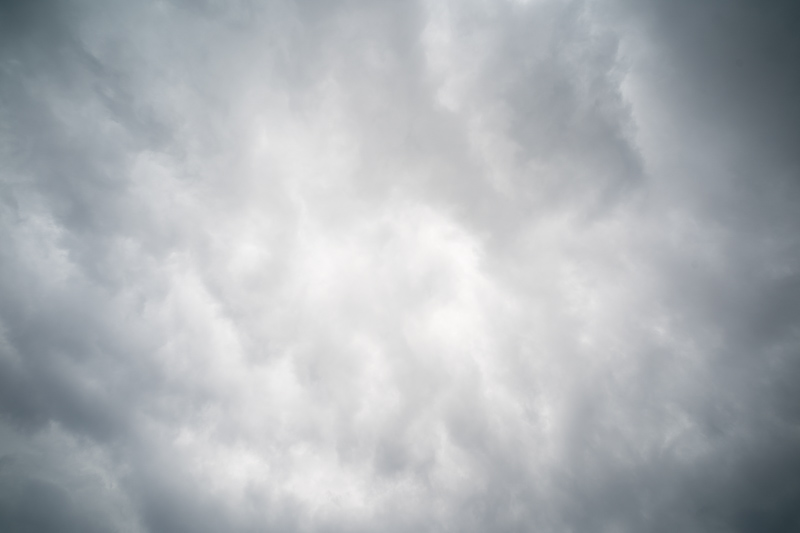
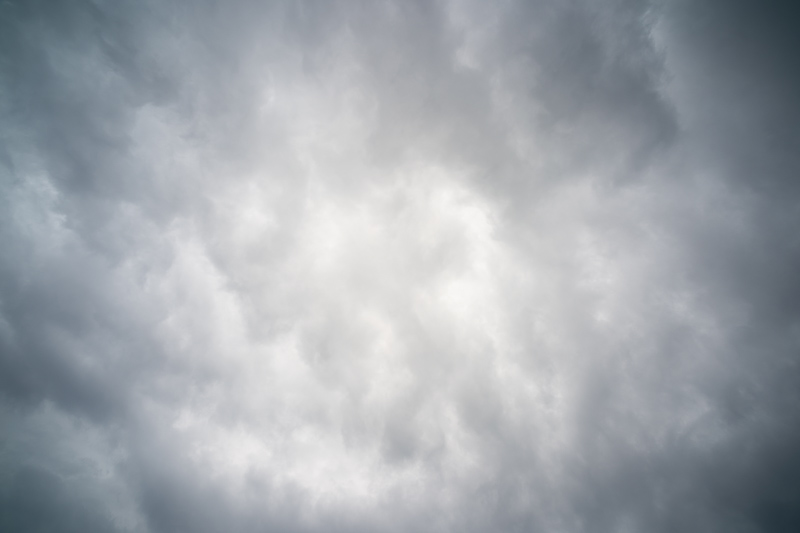
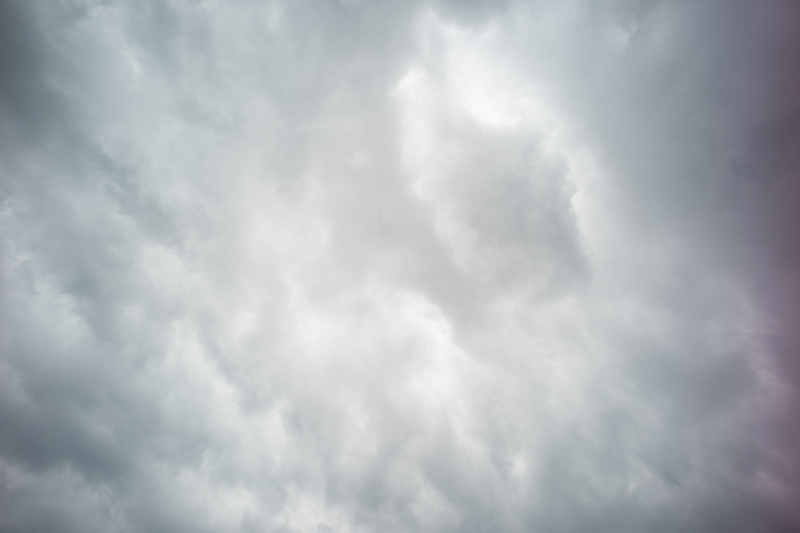
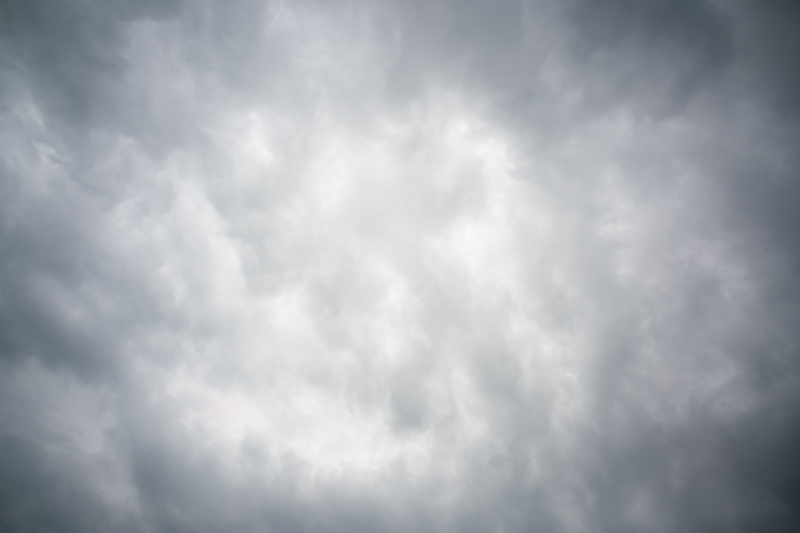
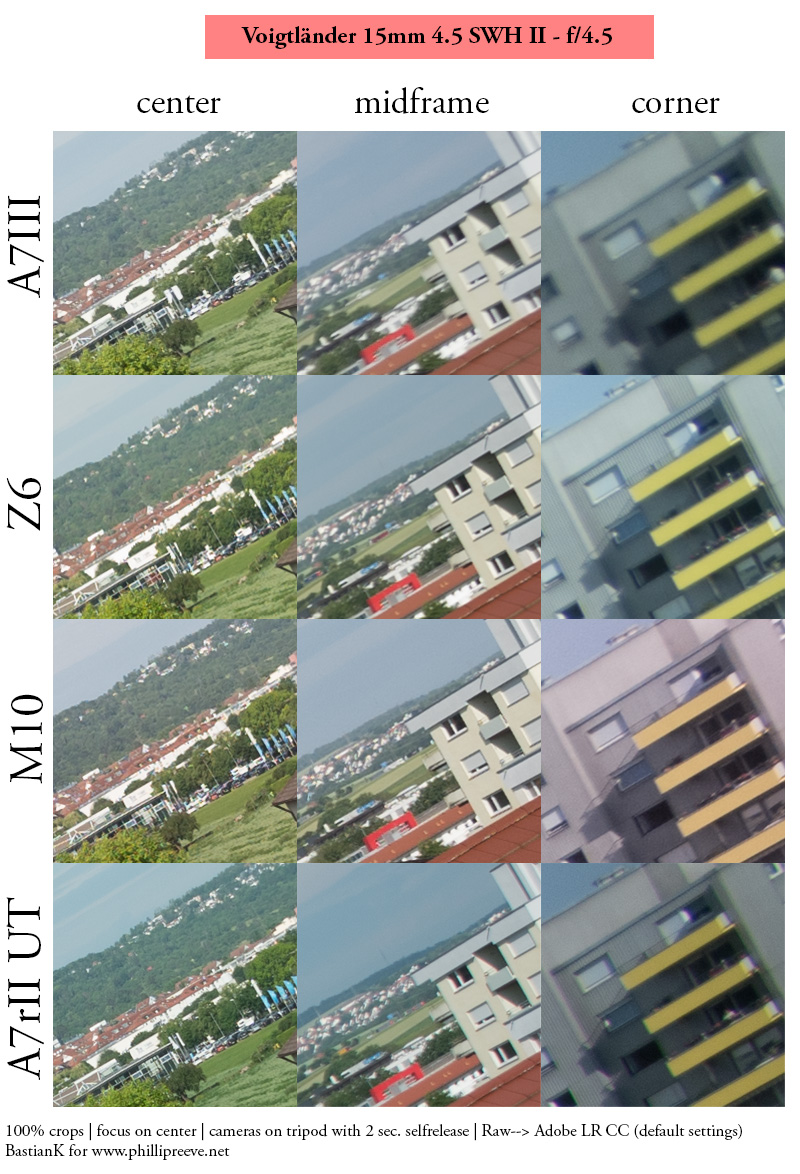

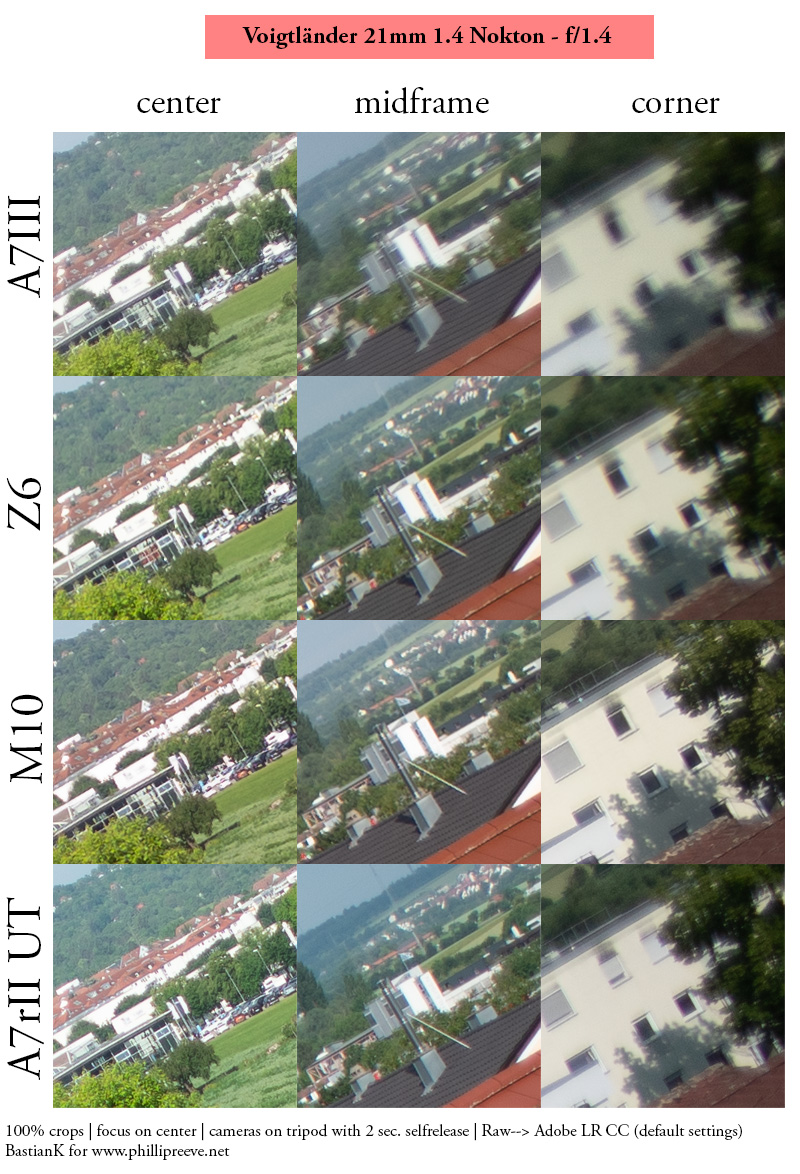
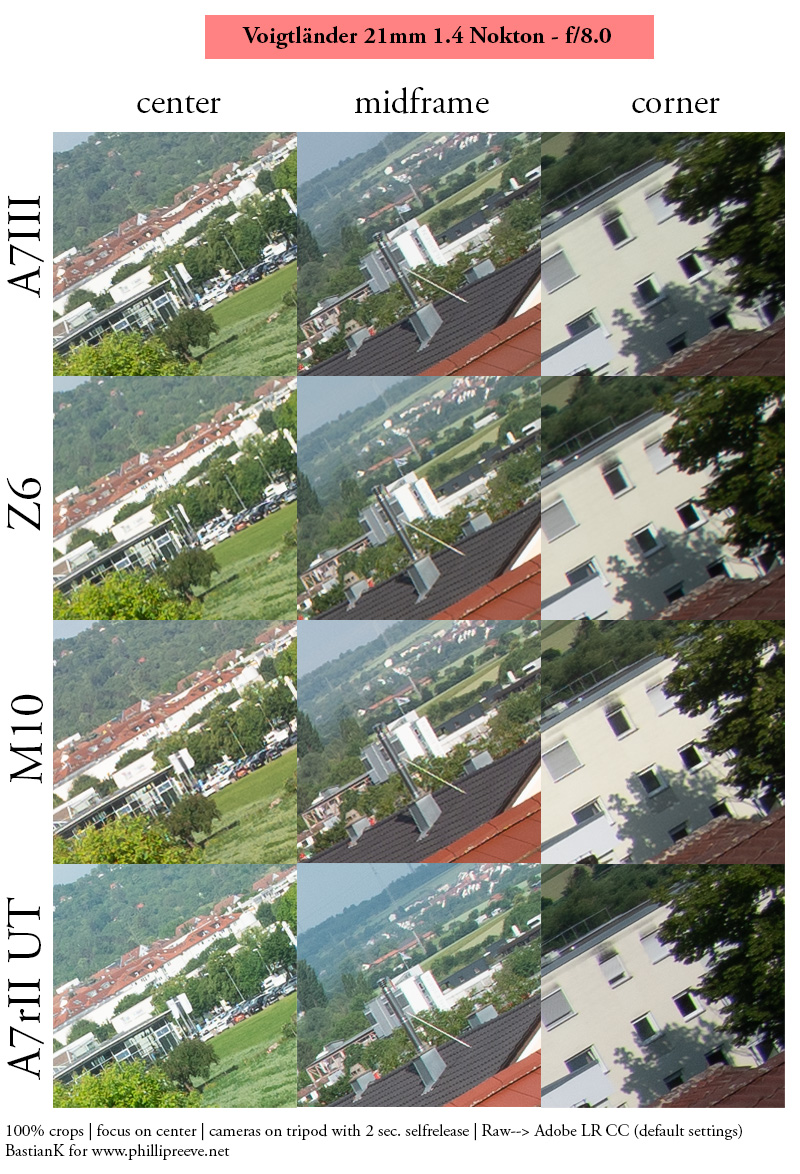
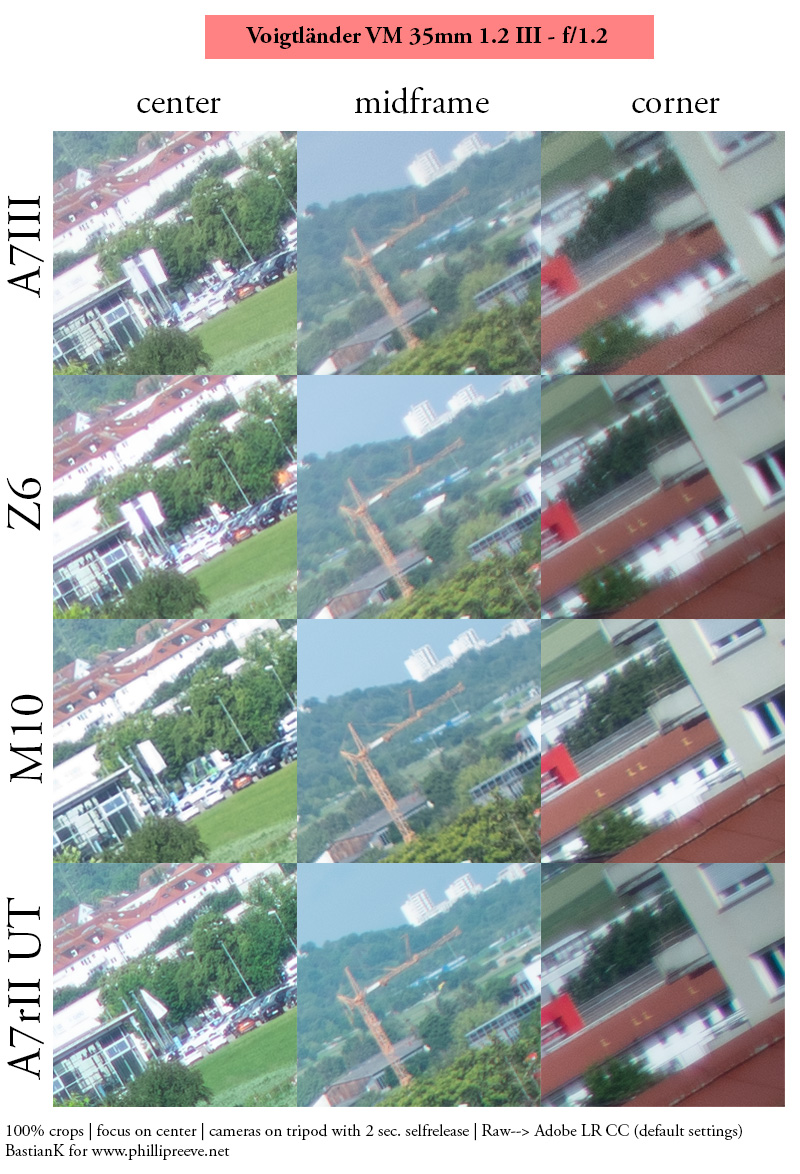


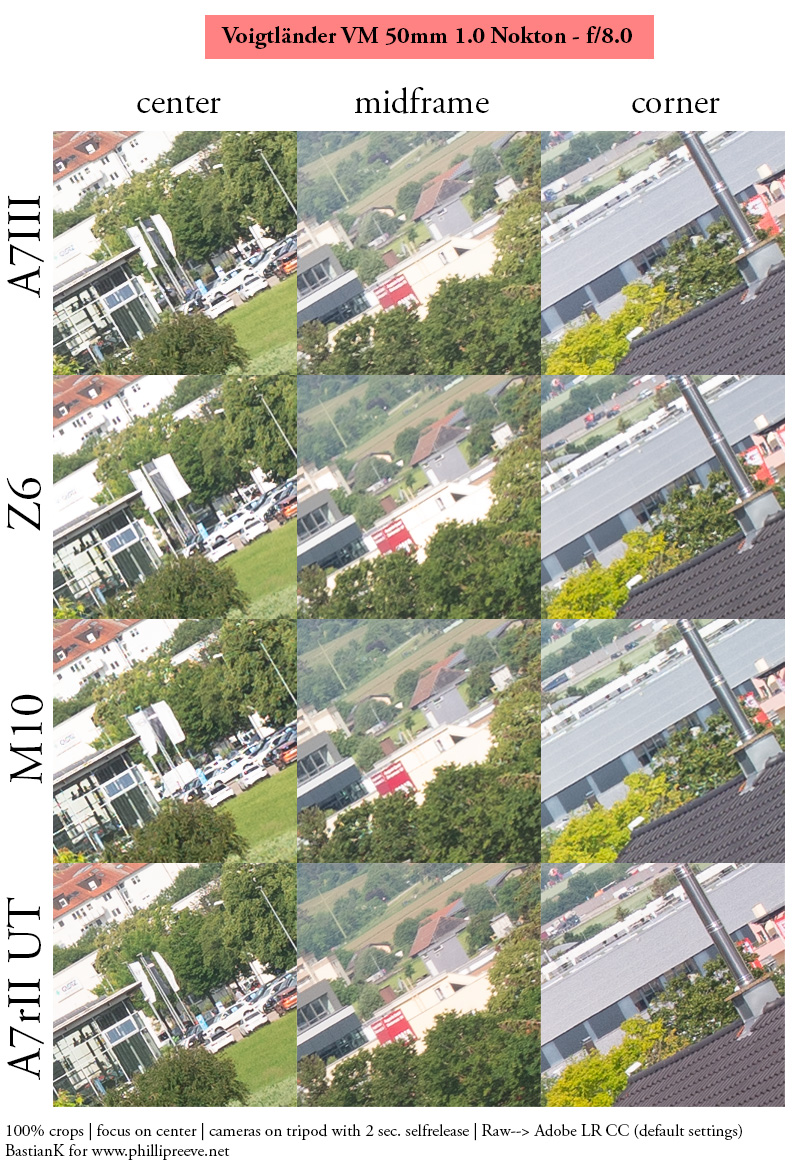
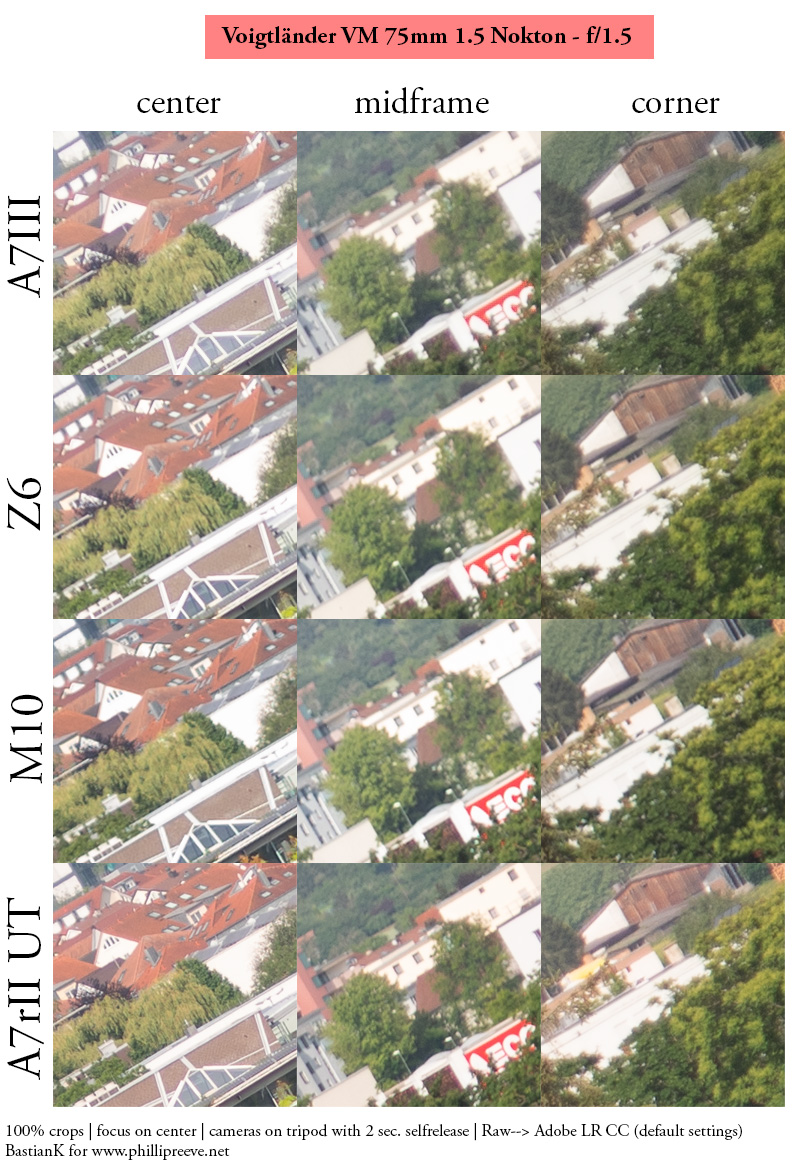
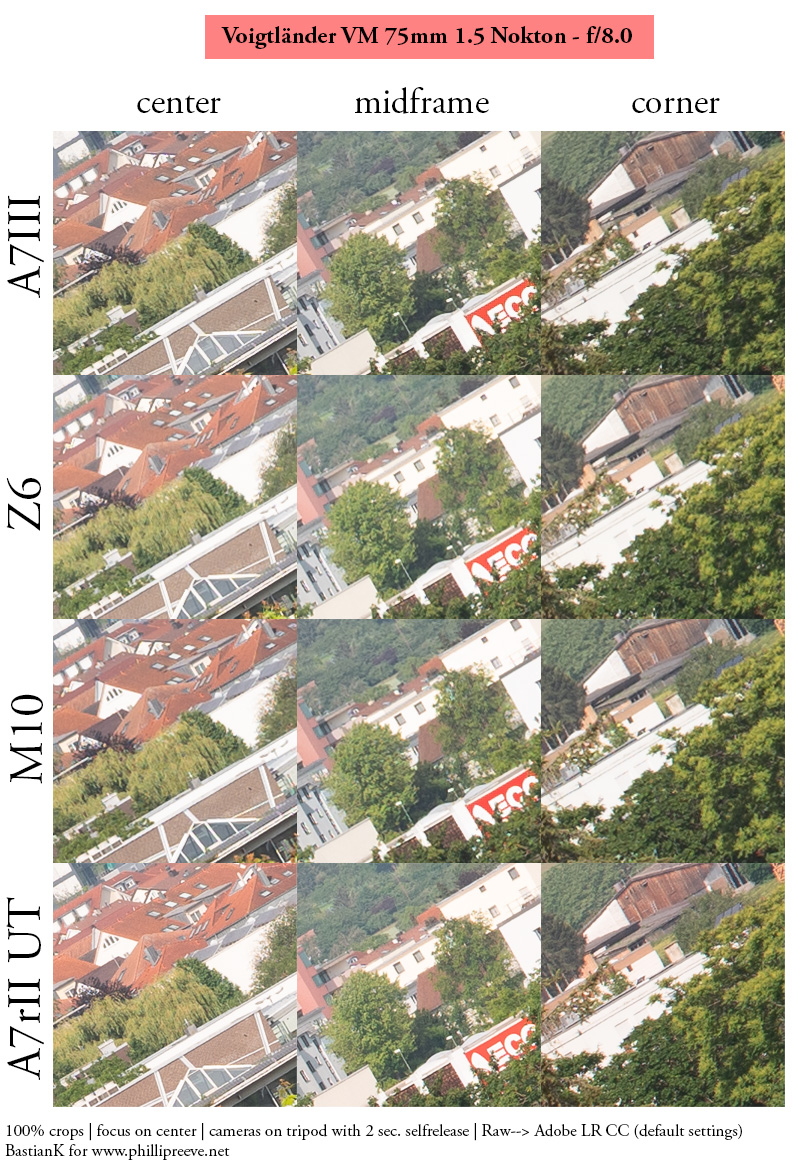
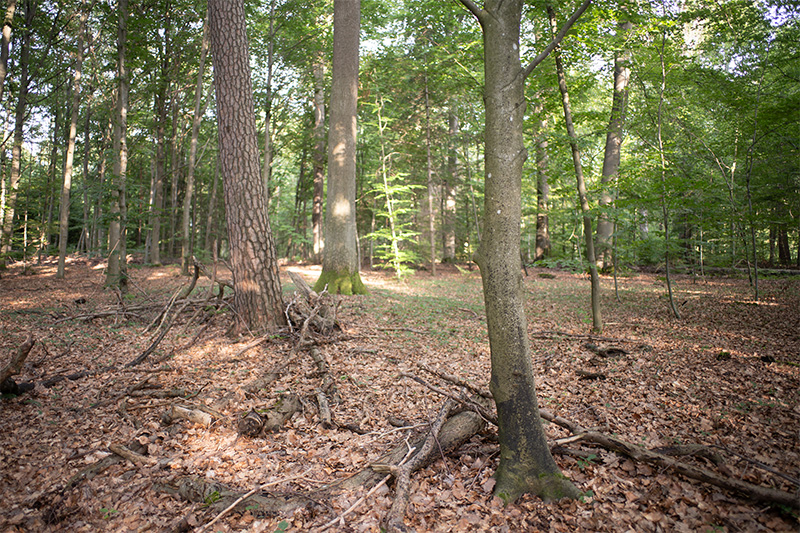
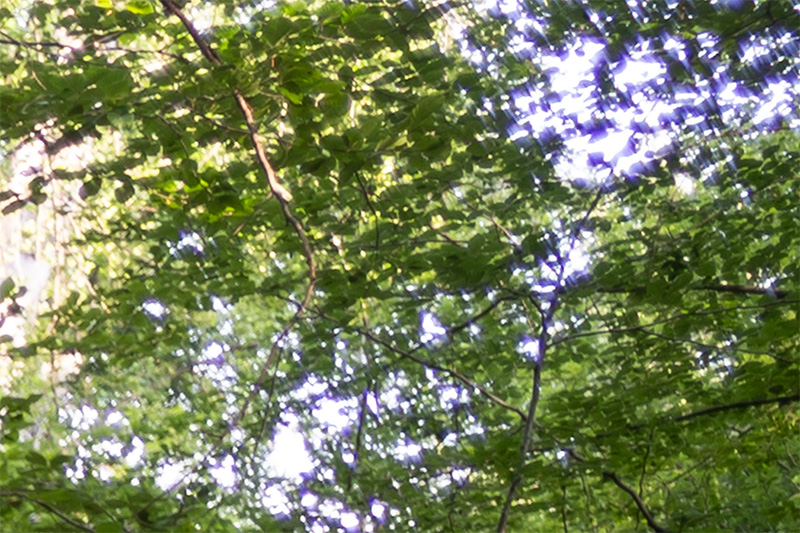
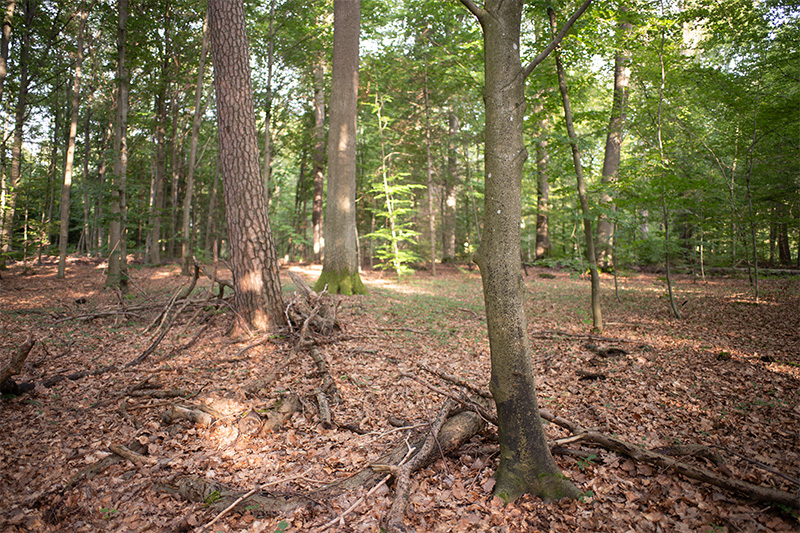
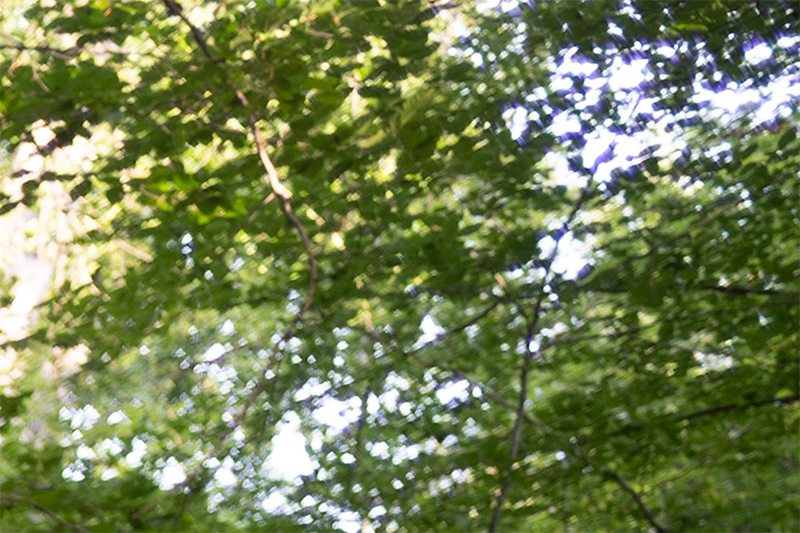

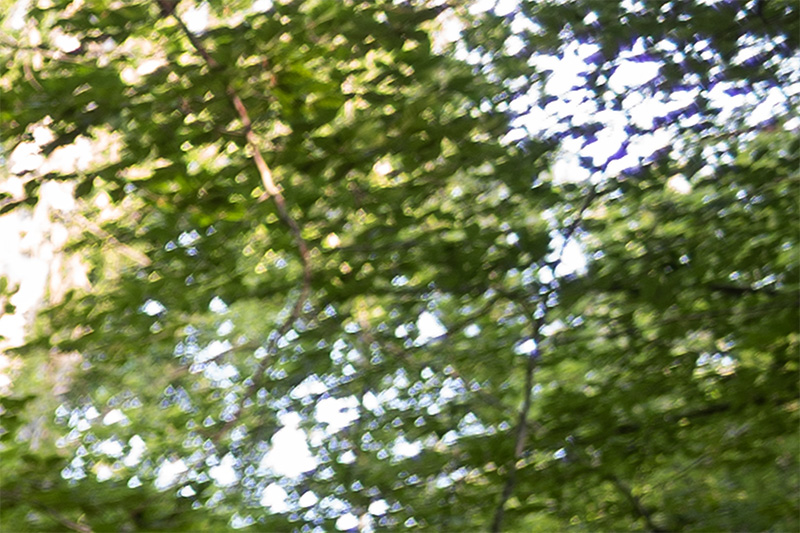
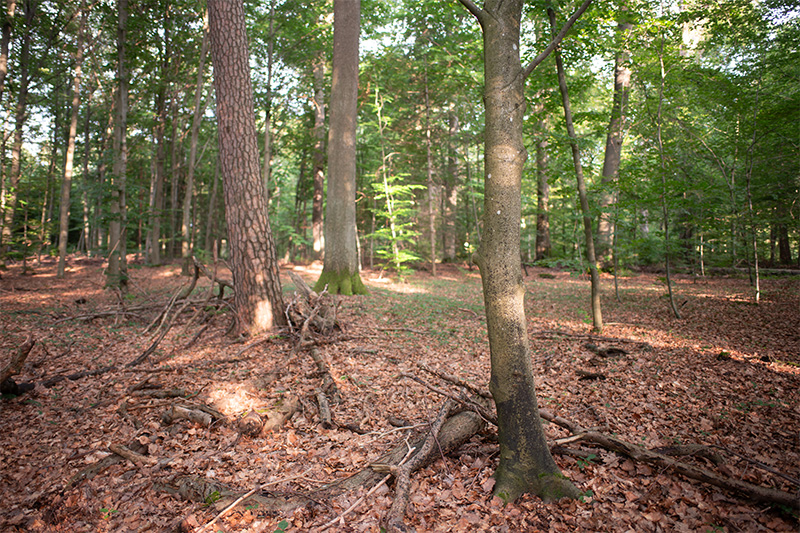
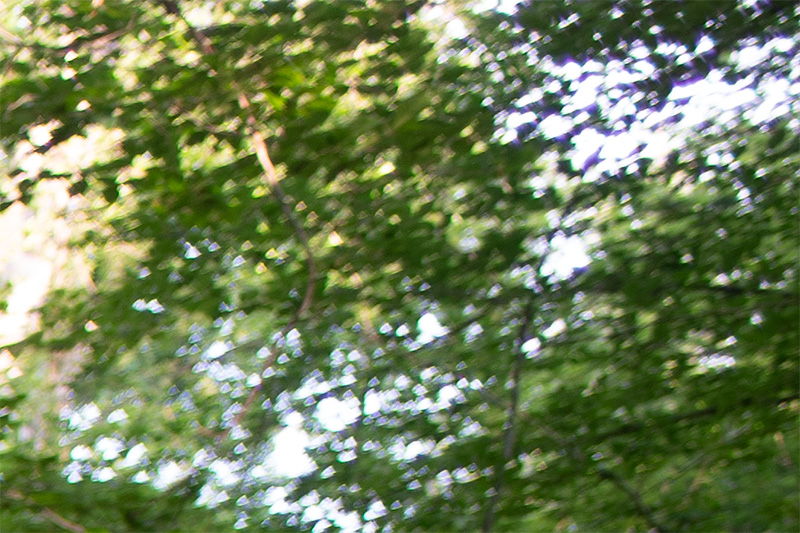


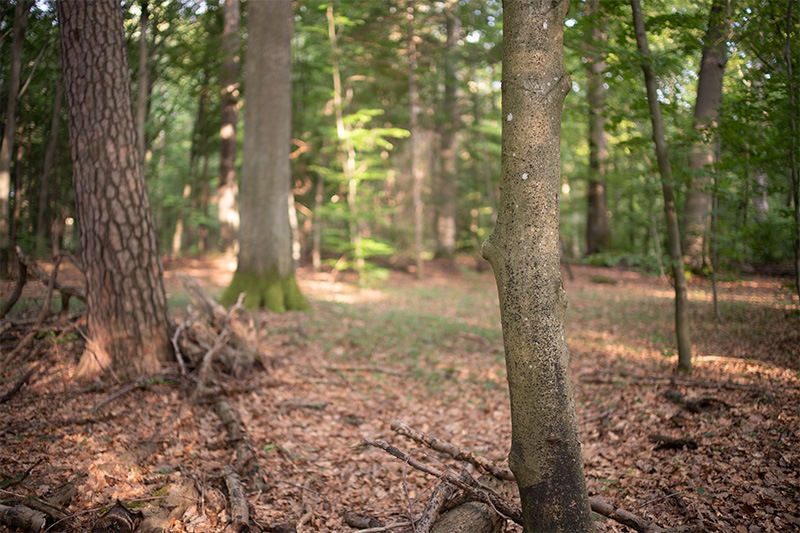

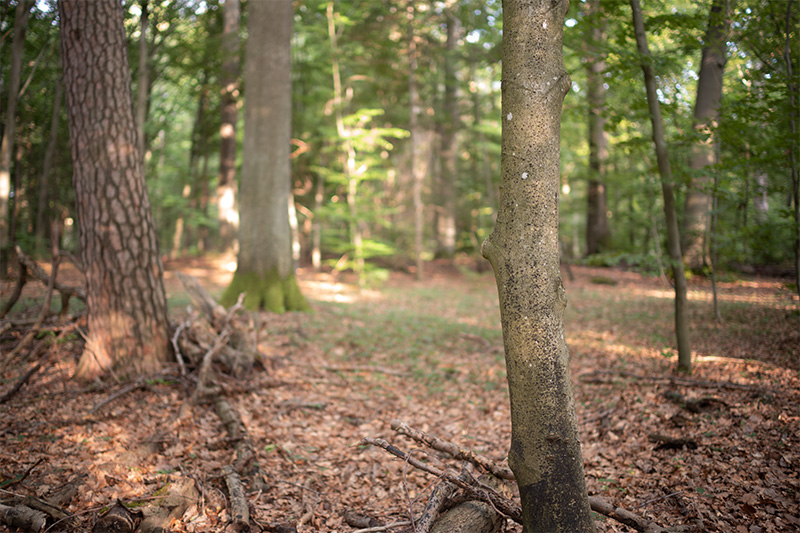
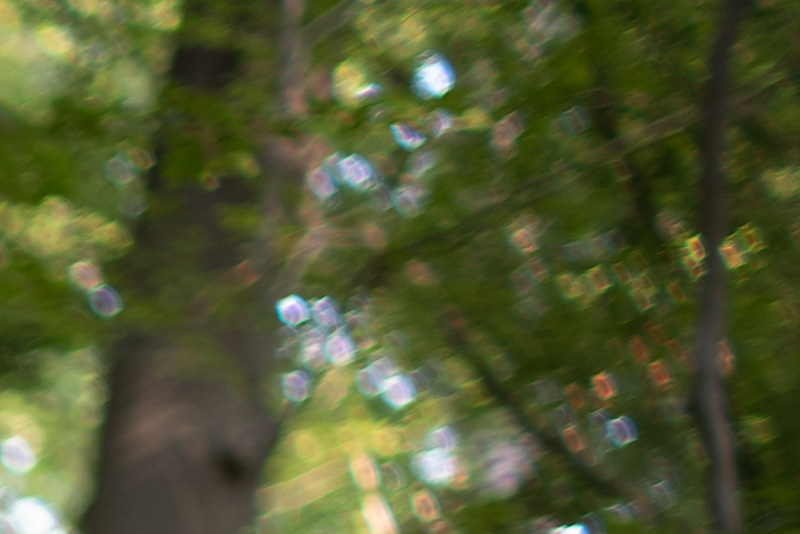

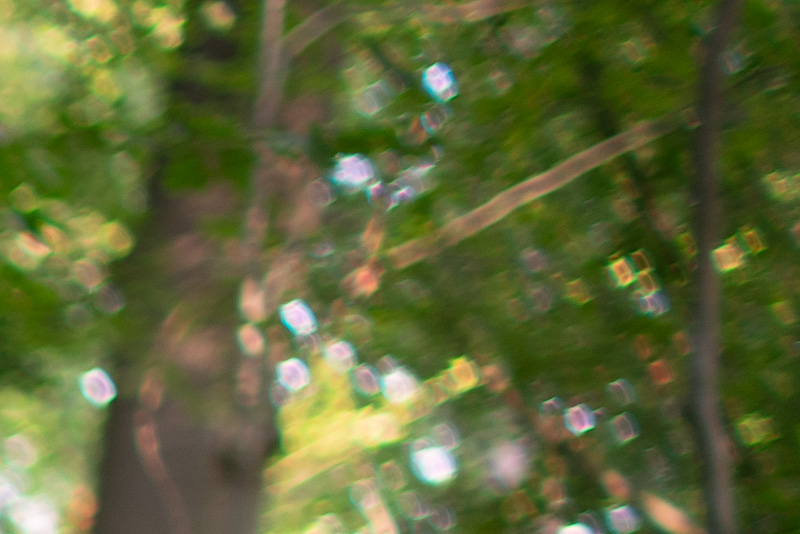
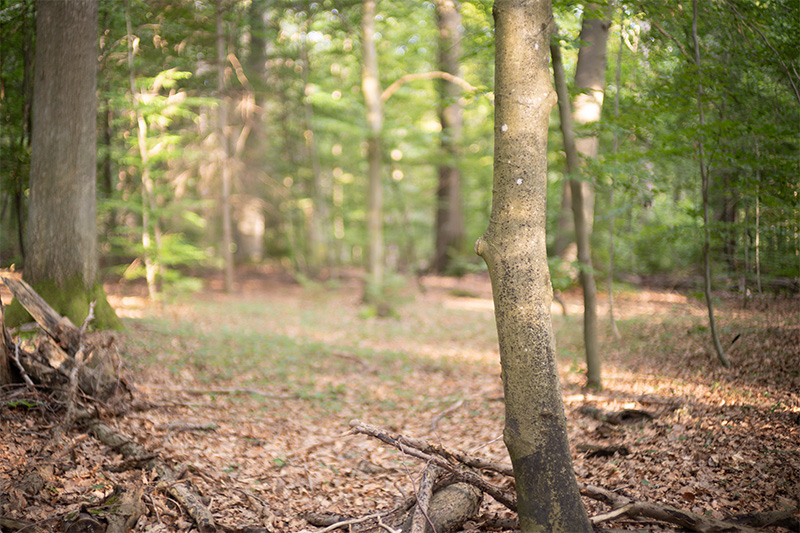
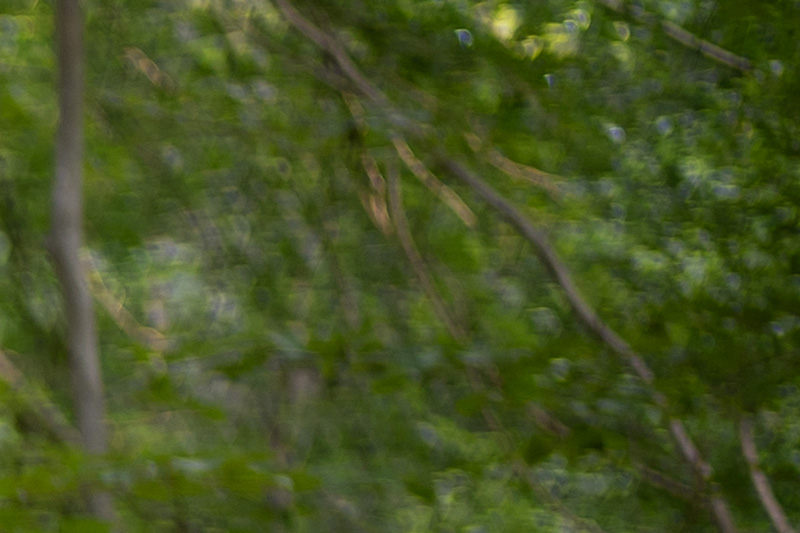
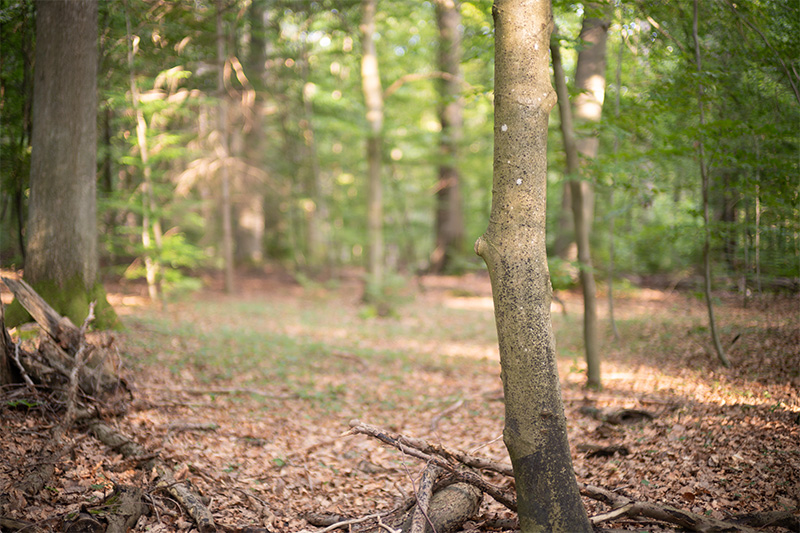
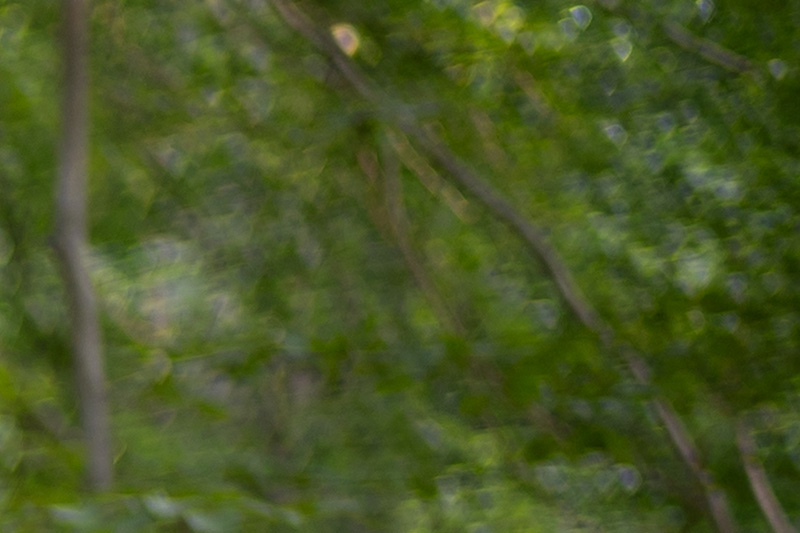
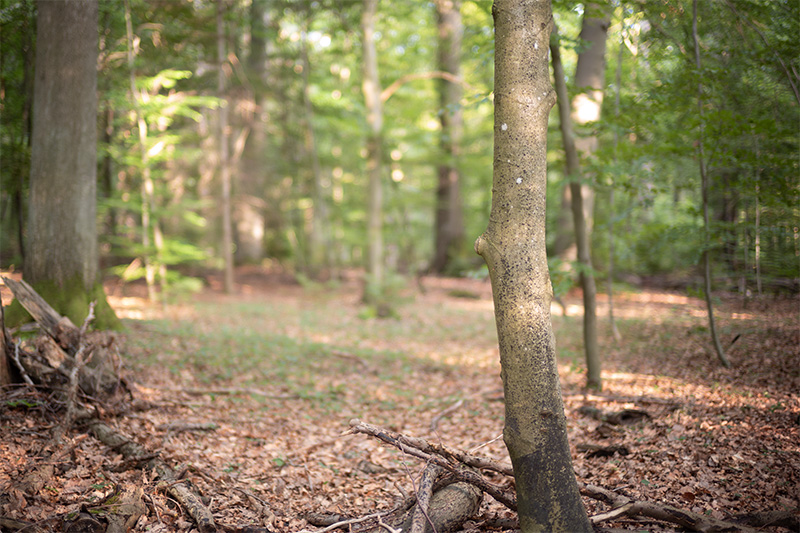
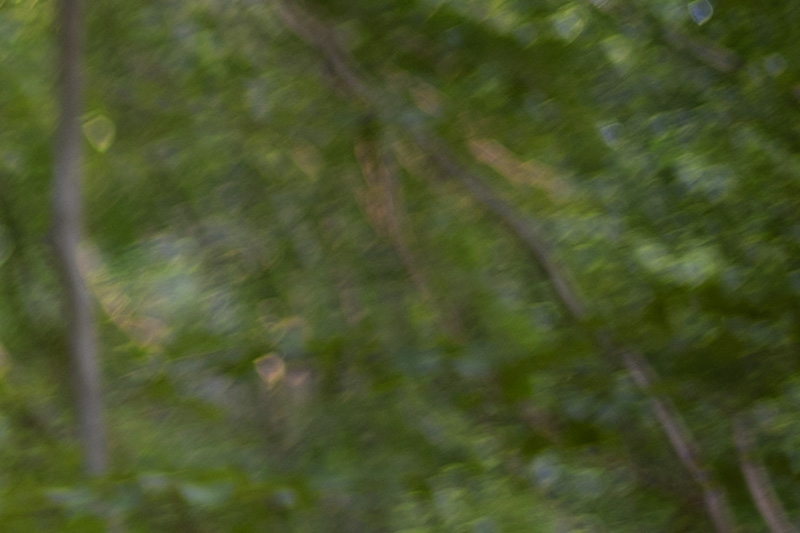
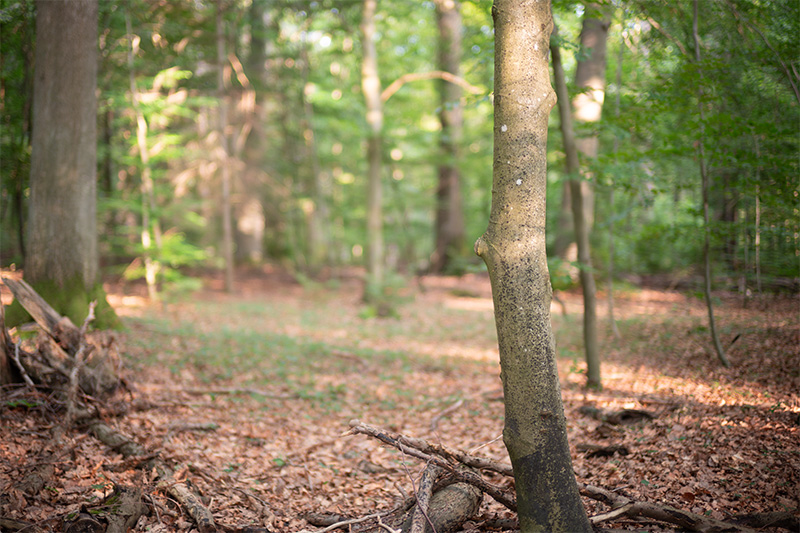
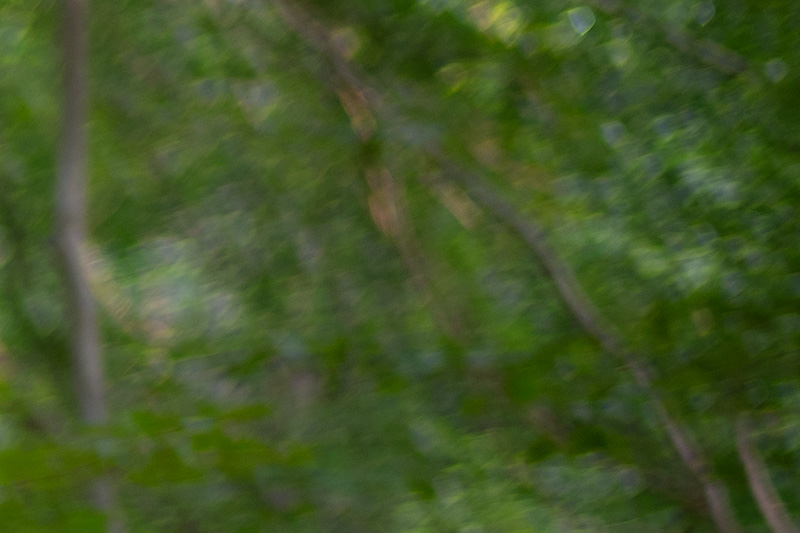

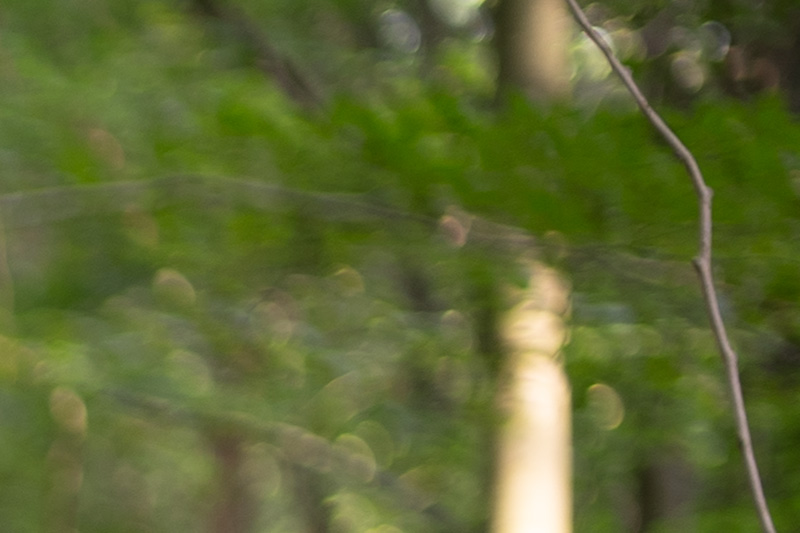
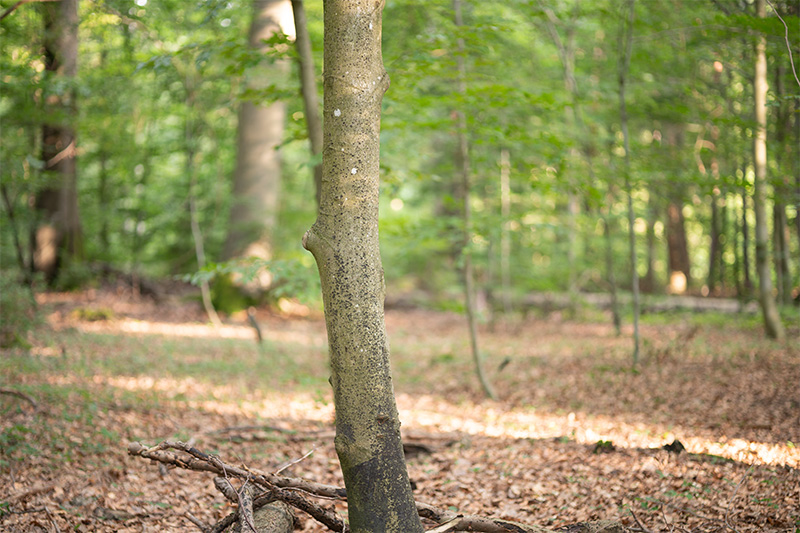
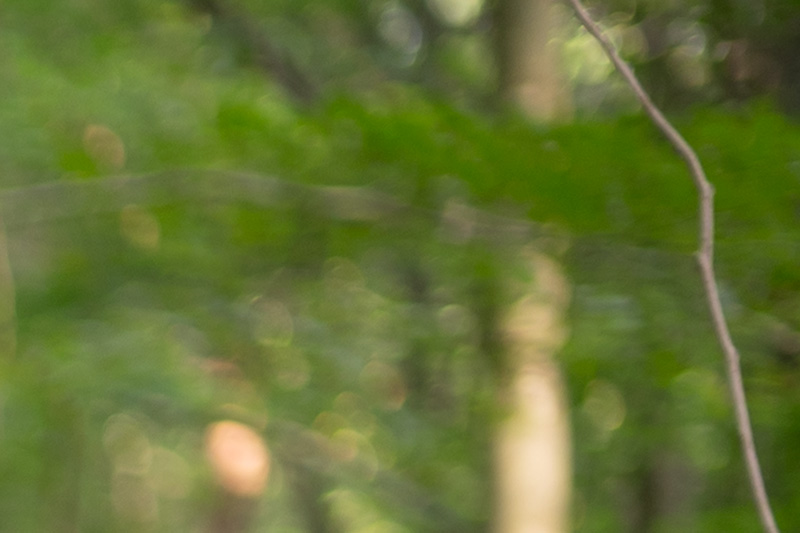

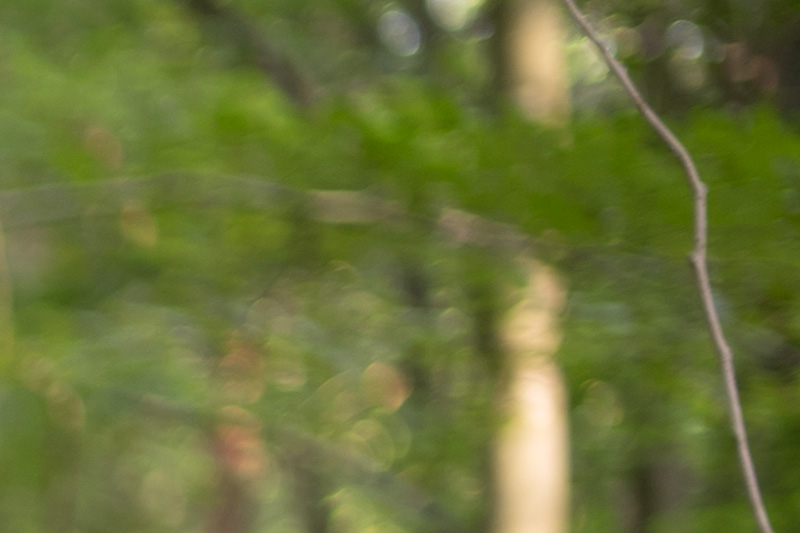
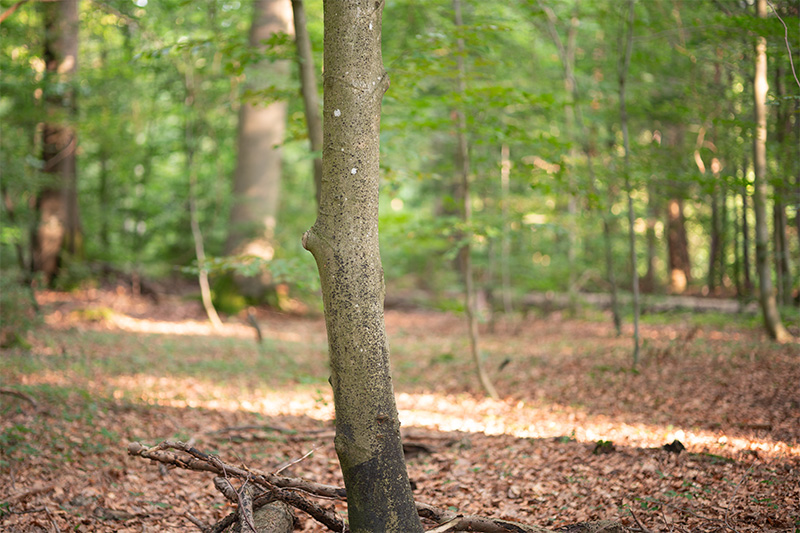
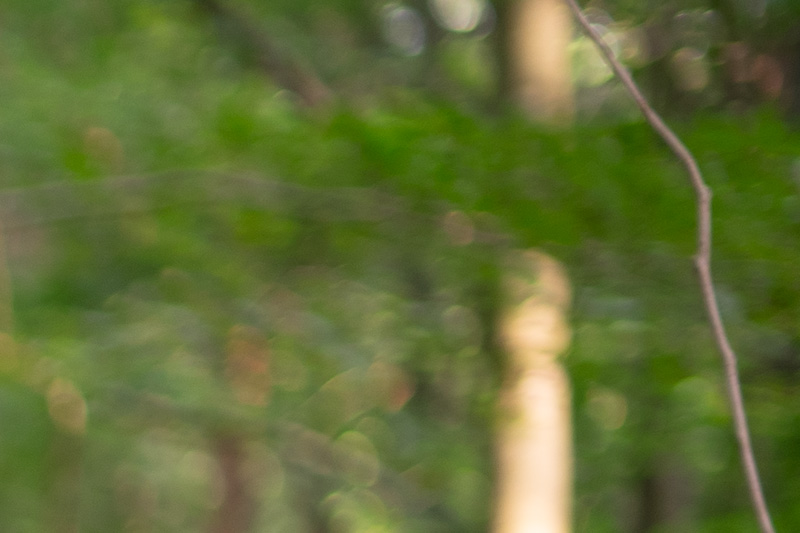

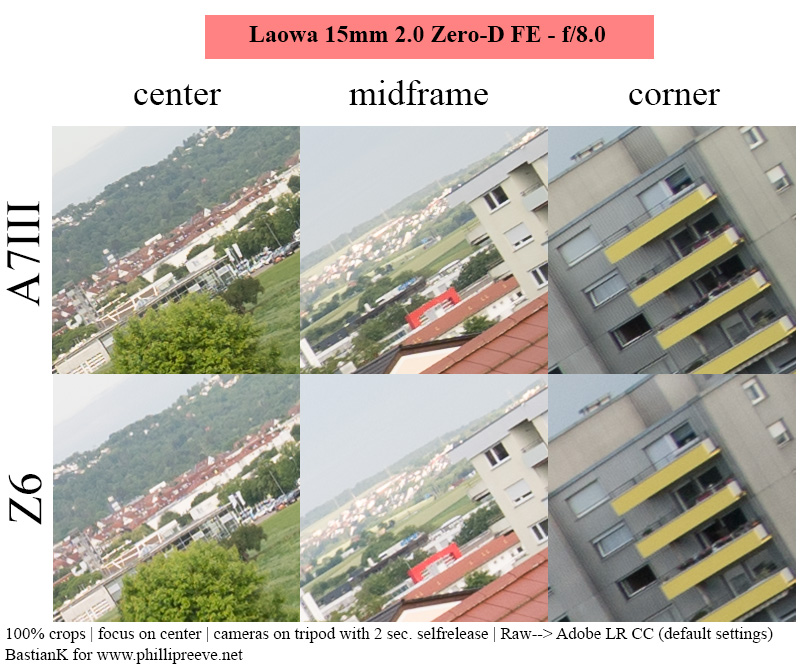
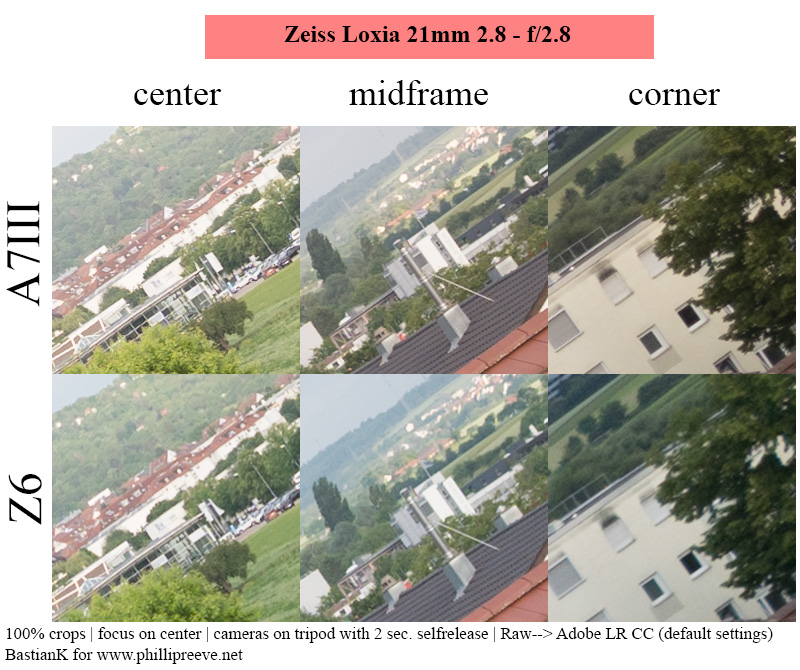
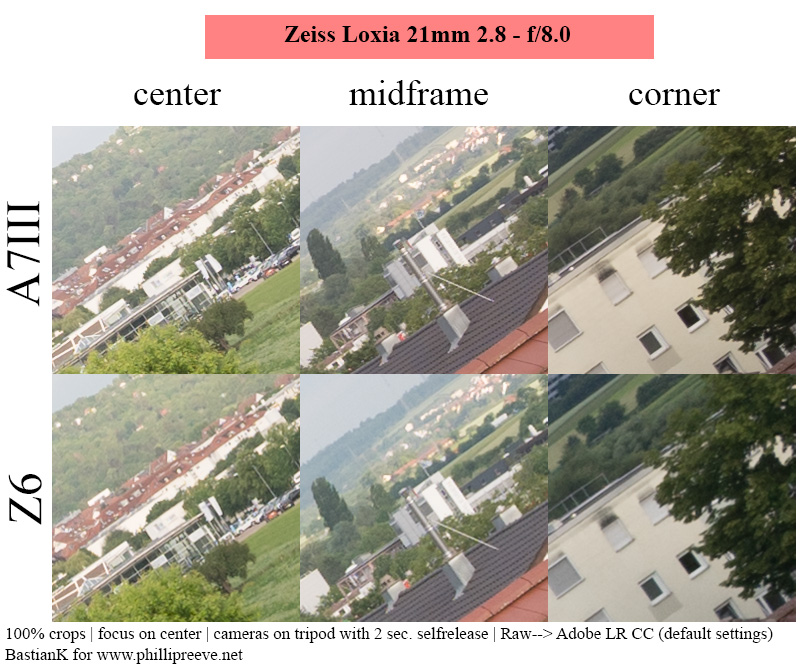
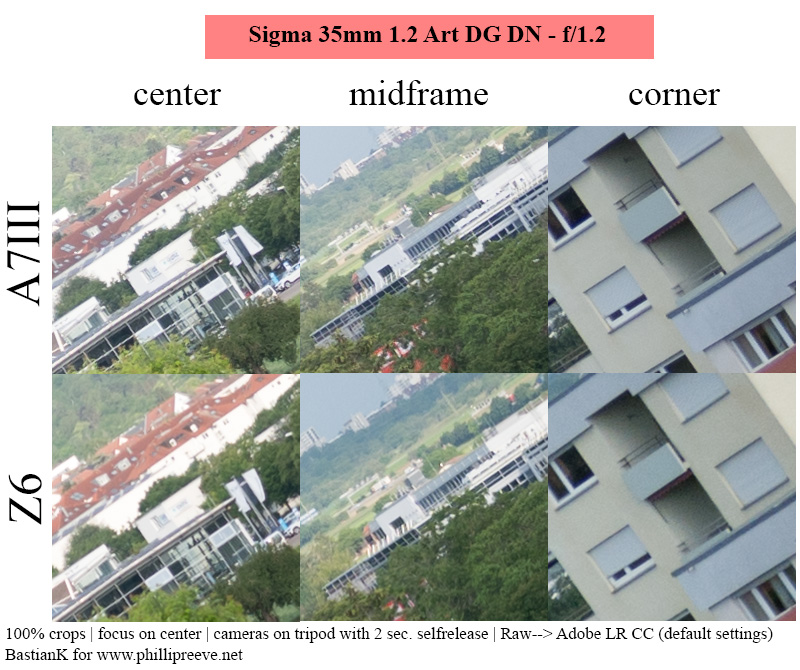

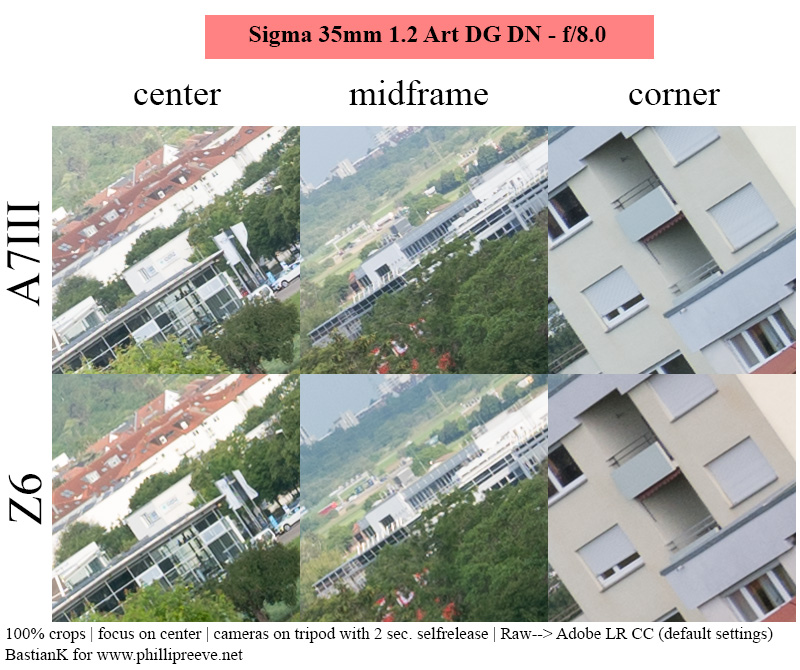
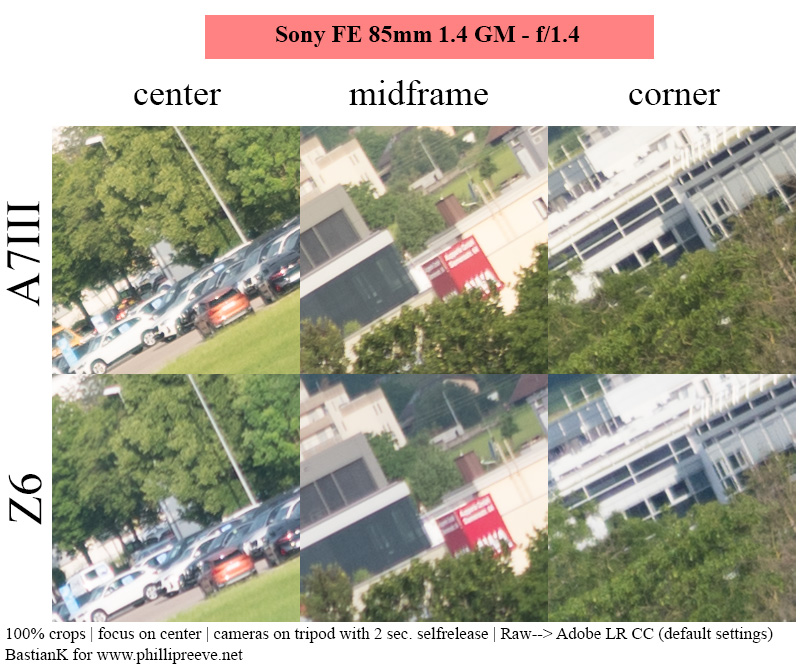
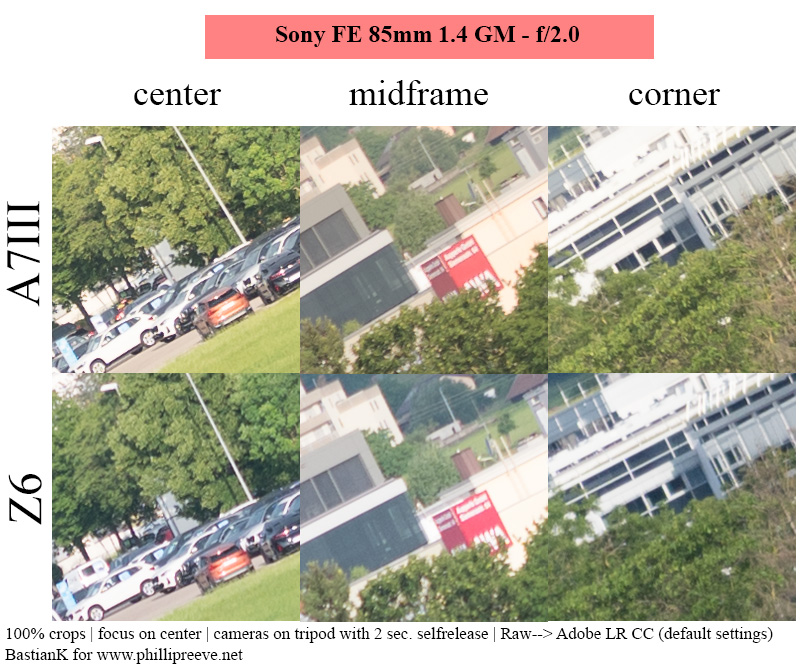
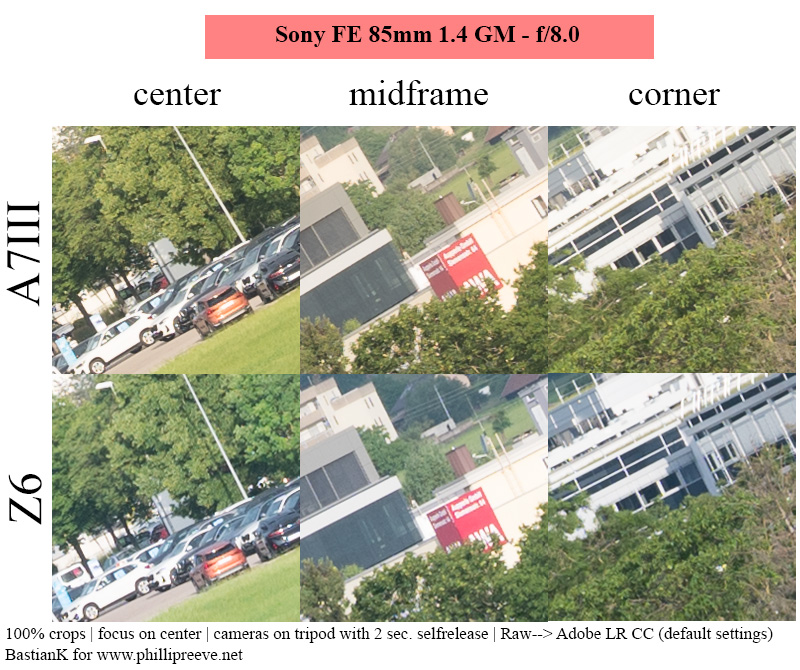
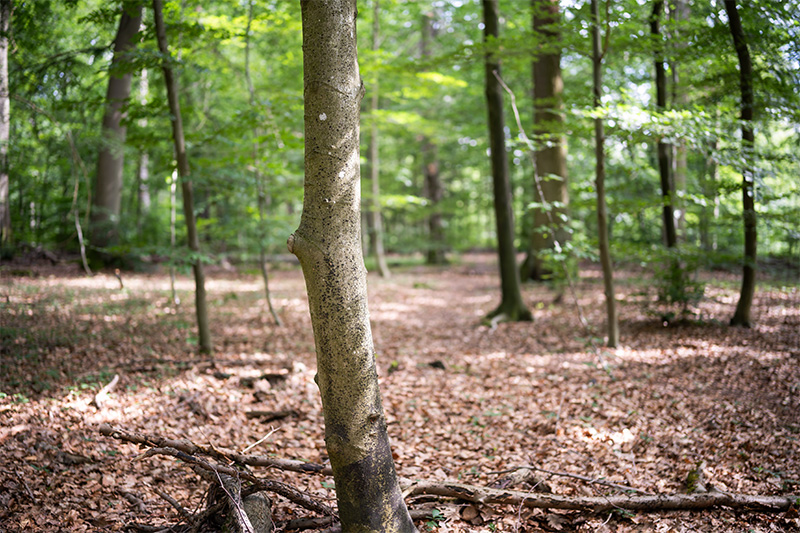
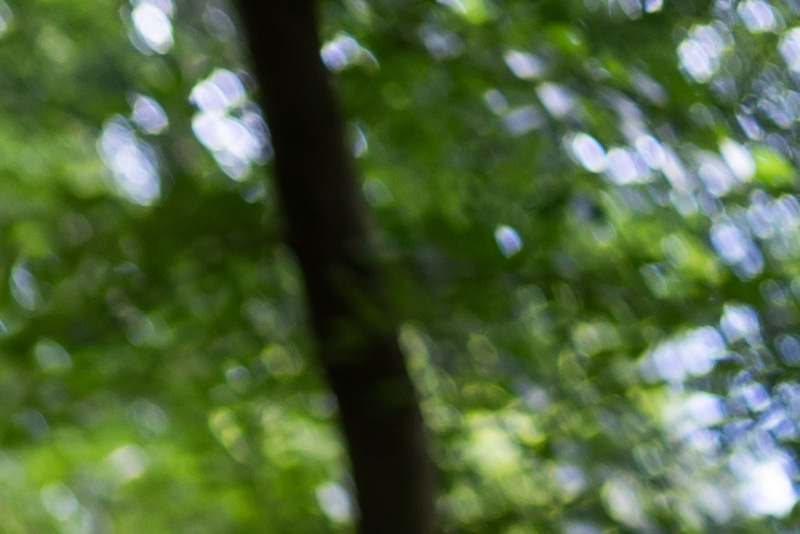
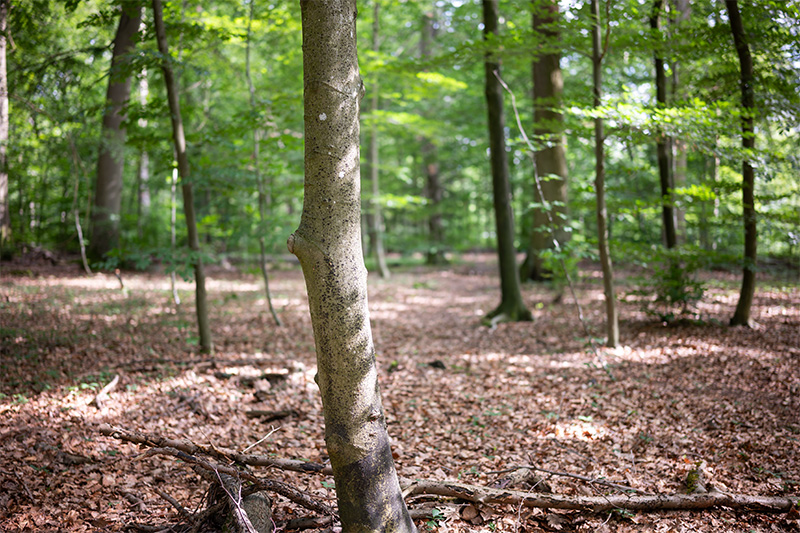
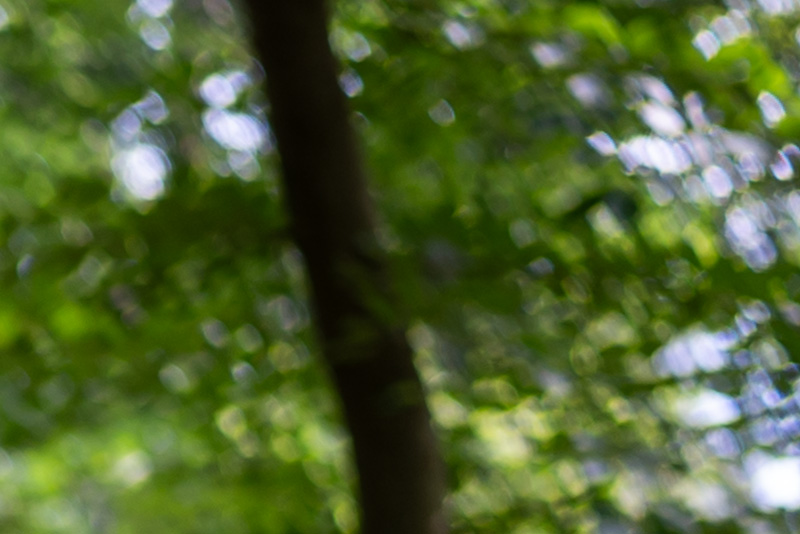
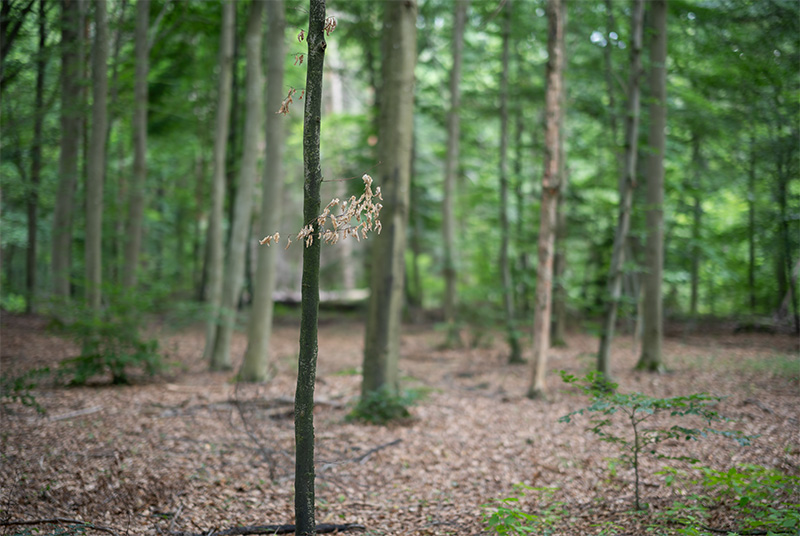
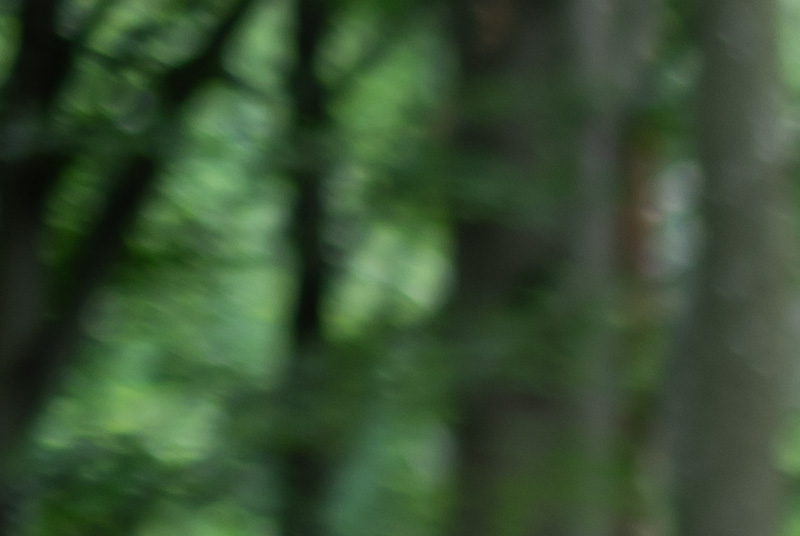
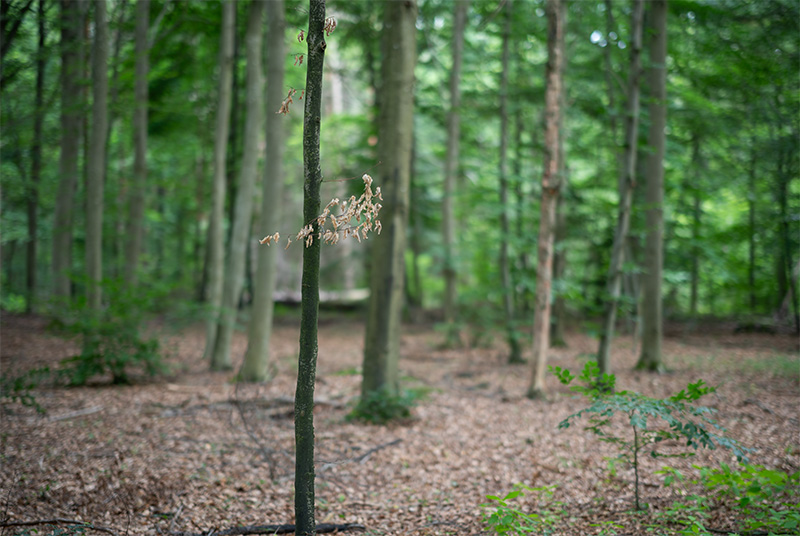
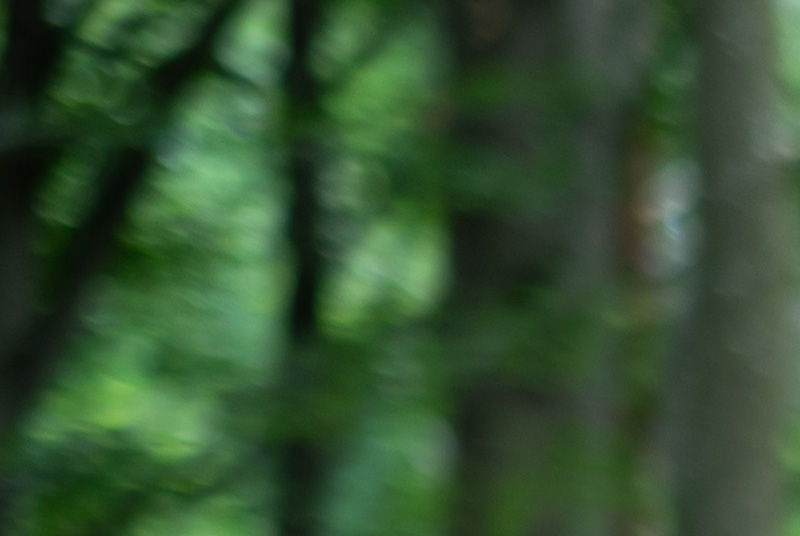
Oh wow, I wasn’t expecting the opposite effect when adapting wider E mount lenses but it makes sense…
Sony has been asleep at the wheel for a while now. There’s still no eye-focus confirmation when using manual focus, for example. Other camera makers, including Nikon, have had that for a while now.
Sony was once the best platform, but Nikon and Canon are beating on the door.
The problem with most of Nikon’s manual focus aids is, that they only work when the lens features electronic contacts.
In some cases you can bypass that (e.g. for M-mount lenses when using the TTArtisan 6-bit adapter) but for most legacy lenses it won’t work, including Nikon’s own older F-mount lenses without electronic contacts.
This feature could be added via a firmware update, but it looks to me like it has been deliberately left out.
Agreed that it would be nice to have the mf aids on all glass, but between the ttartisan 6 bit / m mount and Voigtländer native z mount, it’s quite useful already (for me).
My own request would be to propagate the auto-focus aids from the zf to the z8, z9. We’ll see about he z6iii on Monday, I suppose.
Also would be helpful to be able to off the same controls in mf over the eye/subject detect area as in af.
Note that it is possible to stack any adapter to the TT artisan 6 bit and thus get the manual focus aid. I tested it with several Nikon ai lenses (e.g 50mm 1.2) stacked with no name ais/LM adapter and it works well! The techart adapter can also be used (similarly with stacking of other adapters) and it brings very usable autofocus (but also all the manual focus aids if one wants). At the end, it seems Nikon Z system offers a lot of options!
Thanks for your work on this, Bastian. It’s well-considered and informative. I’m impressed with how well the Nikon does with all the tested lenses. I wasn’t expecting perfection, but the compromises with either M or E lenses aren’t terribly severe.
One thing that might’ve driven home that point is showing how the native E’s perform on the UT mod. I only used the Loxia 21 and 85GM on mine, and never cared about the minor impacts on the GM, but it made the Loxia unusable for landscape. You’ve done a great job showing what you get out of a UT mod, but not what you give up. I know that’s not the overall point of the article, but it would help round out the story. Just a thought.
It’d be like the situation of E mount wides on Z, but even more exaggerated no?
That comparison already exists here, but it might be worth mentioning it in the conclusion.
AFAIK, Z6 has unidirectional AA-filter and I woudn’t call it strong as plenty of aliasing is trivial to achieve, unfortunately. But still stronger than no AA-filter of course, as your samples clearly show.
Anyhow, since Z6 evidently has somewhat thinner optical stack compared to A7III, the change in field curvature should make the adapted E-lenses corners blur slightly more rather than less. I wonder if there may have been slight differences in focus distances?
Anyhow, nice test shots, much appreciated!
It seems the Z6’s AA filter is the ideal combination of “still creating Moiré” and “reducing general acuity” then. Quite the achievement.
Theoretically lenses designed for a thicker filter stack would show further out of focus corners, yes.
With a lens as complex as the Sigma 35mm 1.2 Art it is likely that with a different filter stack the field is already curved where the tree is located that I focused on,
leading to the tree in the background being closer to the “new” focal plane.
Wow I didn’t expect such a big difference between the stock Sony and Nikon. I wonder if there could also be meaningful differences between models of the same manufacturer (eg the 24mp vs the 45mp Nikons), but I‘d assume not as it would impact native lenses.
Imo this makes esp the Zf a very interesting platform for M glass with both the 6-bit adapter and the Techart autofocus adapter.
It is easy to understand that the effect of the cover glass on image quality depends on the image-side light angle, and the object-side light angle is only indirectly related. For most FE wide angles the image-side light angle is <30°, so the 14GM is not more sensitive than the 35GM. But the 35/1.2ART is a relatively telecentric design, so the impact is indeed smaller.
It can be physically demonstrated that increasing the thickness of the cover glass results in field curvature bending to the far side and overcorrection of spherical aberration, while decreasing the thickness does the opposite. Considering that the Loxia 21 has field curvature that bends towards the near side, adapting the Z6 will cause further deterioration of the field curvature. And if there are some FE lenses with field curvature that bends toward the far side, then adapting the Z6 may improve the field curvature.
Very interesting article! A few comments:
– the sensor filter stack main purpose is to filter IR, not UV (most lenses’ glass block UV). Remember the Leica M8 which had a very thin filter stack (0.5mm) and suffered from IR pollution in many circonstances, leading to the almost mandatory use of IR cut filters in front of the lenses, at least for color photography.
– the Italian flag issue encountered on M cameras can be mitigated to a large extent if the lens is 6-bit coded (as long as there is a reasonably good matching profile for what 3rd party lenses concerns). It can even be perfectly corrected using the little-known Lightroom Flat Field plugin, and there is a corresponding feature in Capture One as far as I remember.
– the filter stack of m43 cameras is even thicker (4mm?). Of course, adapting legacy lenses of m43 makes a bit less sense given the severe crop factor.
Nikon may have chosen the right balance between filter stack compatibility and efficiency. I sometimes wished I did not dump my Nikon DSLR system for a Sony A9 back then, but then I entertain the illusion that I could perhaps switch back to Nikon Z without having to change lenses and too much penalty.
Any idea how the sensor thickness of the z8/z9 compares to the z6? Thom Hogan states that they do not have an AA filter, have not seen any empirical verification.
Thanks for the interesting work.
Must be the same, otherwise Nikon’s own Z lenses wouldn’t work properly anymore.
Thought I’d share my own experience with M-mount lenses on the Z7ii. I use a Novoflex LM/NikZ adapter since it seems to have the correct flange distance.
Voigtländer Color Skopar 21mm f/3.5 asph: At full aperture reasonably sharp right into the corners. Midframe a bit less sharp but you have to look closely to notice. Sharpens up a bit from 5.6 but very usable at f/3.5.
Voigtländer Ultron 28mm f/2 asph v2: Extremely sharp already at full aperture. Corners slightly weaker, but far from terrible as observed on Sony A7 cameras (cf. review on this website). The best 28mm I’ve ever used, on any camera. Caveat: Strong LoCA at full aperture (in accordance with the findings published here).
Voigtländer Ultron 35mm f/2 asph: At full aperture weaker than the 28mm, edges and corners a bit soft, but good contrast, no glow. Needs f/4 for edges and corners to sharpen up, but I would use it at full aperture, too.
Voigtländer Nokton 40mm f/1.4: My observations match those published here, on a Sony A7 series camera. Nothing more to say.
Zeiss ZM Biogon 35mm f/2: Terrible at full aperture, only a couple of mm around the center are sharp. Strong field curvature. Low contrast with glow from spherical aberrations. Lots of coma. Said spherical aberrations go away at f/2.8 and contrast/sharpness improve on stopping down, but far corners are mushy even at f/8. Usable at f/8, for infinity the focus point should be chosen slightly shy of the infinity mark to combat field curvature. Easily catches veiling flare despite the hailed “T*” coatings. A “character lens” which is far too expensive for the poor performance offered – even second hand. I don’t know whether all this is due to the filter stack and the lens performs better on a converted camera. I suspect the Biogon design is simply outdated and not up to high-resolving sensors (much like the ZM Sonnar).
Summary: The Voigtländer “Vintage” lenses with aspherical elements I can highly recommend on the Z7. They are reasonably sharp, flare resistant and render colors nicely while being compact and affordable. The Nokton behaves more like a classic, spherical lens which has to be stopped down for best results, but is also renders in a pleasing way. Stay away from the ZM Biogon, it’s a waste of money.
The Z7ii itself is a compact while robust camera which handles nicely. Sure it would be nice to have an electronic rangefinder or a split prism simulation, but the clear and bright viewfinder make magnified focussing a breeze. The image stabilization works a treat, it is easily possible to hand-hold 1/4th second with the Nokton. In addition, the camera is relatively cheap after the influencers poo-pooed it.
I used only high performance lenses because lenses like the 40mm 1.4 or the 35mm 2.0 Biogon have so many aberrations due to their optical design, which will make differences caused by a variation in filter stack thickness much harder to see.
Another remark re. sensor filter: Nikon produced manual focus Ai-S and screwdrive AF lenses from the film era until very recently and they took great care that they work well on their DSLR’s. For this reason, the optical properties of their sensors probably aren’t much different from those of film – at least as far as telecentric lenses are concerned. Their newer AF-S G lenses are optimized for these sensors, too, and since these lenses are supported on the Z system, the sensors of Z cameras in turn work well with film era lenses. Of course, this is just speculation :-). Starting with a clean slate, Sony is unencumbered by such legacy for the mirrorless system.
Good article. I actually found out the hard way on the Sony 20G f/1.8 lens, which has significantly worse edge/corner performance on the Z cameras vs Sony. I have a thread about it with samples on Fred Miranda:
https://www.fredmiranda.com/forum/topic/1845120/
Dear Bastian, thank you very very much for this fantastic piece of work!
I am so surprised about the comparison between M10 and A7RII modded, in which the latter appears to deliver more detail.
It is fantastic so see something like that systematically shown!
Thanks Bastian,
for this rather good assessment — and indirect measurement — of those filter stacks!
A good read for me as I’m just changing from Canon M5 to Nikon Z5 and buying a few E-mount and vintage lenses.
[ I’m getting the Pentax SMC 35mm f/2 (which, it seems, will probably be OK) and I’ve bought (used) the Samyang AF 24mm F1.8 FE — I’ll see how it works after I get the Megadap adapter.]
The only other info I’ve as yet found on Nikon Z sensor stack is in Ming Thein’s Long term review of the Z7 and system.
He remarks that Leica lenses shorter than 35mm are affected (as they aren’t telecentric).
https://blog.mingthein.com/2019/01/12/long-term-thoughts-on-the-nikon-z7-and-system/
( Search the page for “sensor cover”.)
Which rather agrees with your evaluation.
Thanks again, also for all the other good information on this site!
Kristian
Had my Sony modded a while back. Never regretted it. Seriously recommend. I am surprised more don’t have it done.
Thanks for the very interesting article!
Do you by any chance have an L-mount camera to test.
This would be interesting for multiple reasons:
1. The use of Leica M-mount lenses on Leica-SL bodies
2. The use of multi mount lenses (Sigma) on both E-mount and L-mount systems
There seems to be various information in patents (and patents almost never translate 100% to real world products) but an investigation might be interesting.
FYI most patents don’t mention the sensor filter at all. But here are some results I found:
Panasonic S-Mount lenses
-2.1mm diffractive index 1.51680
Leica SL 50mm F1.4
-1.41mm diffractive index 1.51680 (maybe 0.8mm distance from sensor)
Sigma 45mm F2.8
-2.5000mm diffractive index 1.51633
Sigma 60-600 DG DN
-mentions both 2.5mm diffractive index 1.52301 and 2.1mm diffractive index 1.51680 designs
Sigma 56mm F1.4 APS-C
-2mm diffractive index 1.51680
Sony E-mount 24mm F2.8 & 16-35mm T3.1 & 90mm macro
-2.500mm diffractive index 1.516798 (maybe 1mm distance from sensor)
Viltrox APS-C E-Mount (early)
-2mm diffrative Index 1.52
Viltrox APS-C E-Mount (27mm F1.2)
-2.8mm diffractive index 1.517
Zeiss Batis
-2.5mm diffractive index 1.5168
Nikon Z-mount (50mm F1.2 & 40mm F2):
-1.6mm diffractive index 1.5168
I don’t, from everything I have seen so far it looks to be similar to Nikon Z.
At least the patents suggest it would be in between Z and E-mount
1.6mm vs 2.1mm vs 2.5mm
Otherwise that would also be pretty bad news for Sigma lenses either on E- or L-mount
Thanks for doing this, the Nikon Z6 results mirror my experiences. I would encourage you to also try the Z7, I have heard it performs even better than the Z6 due to the absence of the AA filter.
Thanks for doing these comparison tests. I am particularly surprised that you found substantial differences between the Sony E and Nikon Z sensor stacks, including when using E mount lenses on a Z camera.
When I tested my Nikon Z6 against Sony a7II with Voigtländer VM lenses 21mm f/1.8, 35mm f/1.2 v2 and 50mm f/1.5 (the previous Nokton model) as well as the 7Artisans 50mm f/1.1, then the differences were non-existing or negligible. Only the 21mm Ultron had a difference worth noting, but I had some micro tilt/swing going on as well with that lens too, which may explain a bit.
Later, I had my Z6 Ultra-Thin converted by Kolari Vision, and I see a marked improvement with M lenses over my stock Z7. The 28mm Ultron II for example, shows a perfectly flat plane of focus on the Z6UT, while it has noticeable outward bending field curvature on my Z7. My Mitakon Speedmaster 85mm f/1.2 (in F mount) shows crazy inward bending field curvature on the Z6UT, while having a moderate degree on a stock Nikon.
So as always, it depends on the lens, and perhaps specifically the exit pupil distance and aperture, whether it adapts well with a non-native camera.
I currently own a Leica M 240 that I bought used and use a number of different makers lenses with it. If it ever goes south, there’s no way I can afford a new Leica.
But you now know why my plan is to buy a Z, probably a Z5 actually, instead. And I expect my glass will do just fine on it. A friend of mine – an actual optical engineer – agrees.
Where in these list is a Leica SL2?
Better than kolari?
No, worse than Nikon Z.
I’m a little late to the party (just bought a Zf) but I’m wonderiing whether we’re actually seeing a drop in corner resolution with adapted E-mount lenses or rather filter stack-induced inward field curvature? The background crop from the Sigma 35/1.2 isn’t clear.
If this was the case, lenses such as the Laowa 45/0,95 for Sony should perform better on Nikon.
Additional question: is the Neewer/Funmount ETZ of the right thickness?
Asking for a friend who wants to adapt the Laowa 15/2 and Voigtländer 21/1.4 to Nikon Z.
The increased field curavture due to the difference in filter stack thickness leads to worse resolution. There is no either or, they are connected.
The difference is not enough to suddenly give the Laowa 45mm 0.95 great bokeh at longer distances.
My Neewer adapter has okay thickness, but because of issues mentioned above I won’t be using E-mount UWA on that camera and I also wouldn’t recommend doing so, regardless of adapter thickness.
Apprechiate the answer! Guess I should have thought about this before ¯\_(ツ)_/¯
Well, then I should probably switch to the native Z-mount CV15/4,5. It does 1:4 now!
Finding great UWA for Z-mount is actually not that easy.
Laowa 15mm 2.0 in M-mount with an adapter that gives Exif could also be an option.
Going from one adapted lens to another adapted lens seems subpar.
I’ve had the CV15/4,5 before. The Laowa is the better lens but if it wasn’t for its magnification, I would have stayed with the Voigtländer.
I should test adapting my Laowa first. Maybe it’s ok to me.
That is possible, no reason not to try!
No idea why I can’t answer to your last answer. Anyway: I now own both the Viltrox ETZ and Neewer/ Funmount ETZ adapter.
I’ve compared the Laowa 15/2 and Voigtländer 21/1.4 on both adapters on the Nikon Zf against the Sony A7 III.
The thickness of the Viltrox must be near perfect. When I added some tape as a shim, neither lens reached infinity.
For both lenses, the Viltrox ETZ gave slightly better results (more axial CA with the Funmount for whatever reason). However, I couldn’t replicate the drop in resolution with the Laowa adapted.
I focused on a corner at infinity and took shots at f/2 and f/4 or f/5.6. Even viewed at 300%, the Laowa looked the same on the Nikon Zf.
For the Voigtländer, there was a small but visible difference in the corner. At f/5.6 more than at f/1.4.
At distances closer than infinity, I couldn’t detect any differences at all.
I’m pretty sure my methology was clean, so I’m happy with the result.
Also: what the Funmount adapter does for fully manual lenses is close to magic!
Hi Bastian —
I’m curious if you’ve done any tests on cameras with no filter at all—I’m thinking fully monochromatic conversions like what Dan Llewellyn at MaxMax offers. I know (from having one) that most native F-mount lenses resolve exponentially better on the modified sensor, but since the AF sensor operates on a different path there is some fine-tuning one has to do to use them. Manual focus lenses have no problem so long as they’re focused in Live View. I’d be very curious to see how Leica M mount lenses work adapted on a fully monochrome Nikon Z mount camera.
No experience with those modifications, sorry!
VM 50 apo example on UT IR pollution is there